
DOT HS 813 266 March 2022
Overview of Motor Vehicle
Crashes in 2020
DISCLAIMER
This publication is distributed by the U.S. Department of Transportation, National
Highway Traffic Safety Administration, in the interest of information exchange.
The opinions, findings, and conclusions expressed in this publication are those of
the authors and not necessarily those of the Department of Transportation or the
National Highway Traffic Safety Administration. The United States Government
assumes no liability for its contents or use thereof. If trade or manufacturers’ names
or products are mentioned, it is because they are considered essential to the object
of the publication and should not be construed as an endorsement. The United
States Government does not endorse products or manufacturers.
Suggested APA Format Citation:
Stewart, T. (2022, March). Overview of motor vehicle crashes in 2020 (Report No. DOT HS 813
266). National Highway Traffic Safety Administration.

i
Technical Report Documentation Page
1. Report No.
DOT HS 813 266
2. Government Accession No.
3. Recipient's Catalog No.
4. Title and Subtitle
Overview of Motor Vehicle Crashes in 2020
5. Report Date
March 2022
6. Performing Organization Code
NSA-230
7. Author
Timothy Stewart
8. Performing Organization Report No.
9. Performing Organization Name
Data Reporting and Information Division
National Center for Statistics and Analysis
National Highway Traffic Safety Administration
1200 New Jersey Avenue SE
Washington, DC 20590
10. Work Unit No. (TRAIS)
11. Contract or Grant No.
12. Sponsoring Agency Name and Address
National Center for Statistics and Analysis
National Highway Traffic Safety Administration
1200 New Jersey Avenue SE
Washington, DC 20590
13. Type of Report and Period Covered
NHTSA Technical Report
14. Sponsoring Agency Code
15. Supplementary Notes
This report could not have been achieved without many contributions and the support of these people: Tonja
Lindsey, Cherian Varghese, Adam Toth, Leah Reish, and Umesh Shankar. The author also gratefully thanks
Rajesh Subramanian and Chou-Lin Chen for their review, feedback, and support.
16. Abstract
This technical report provides an overview of motor vehicle crashes in 2020. There were 38,824 people killed in
motor vehicle traffic crashes on U.S. roadways during 2020, a 6.8-percent increase from 36,355 fatalities in
2019, or 2,469 more people killed in traffic crashes in 2020. The estimated number of people injured on our
roadways decreased in 2020 to 2.28 million, falling from 2.74 million in 2019, a statistically significant decrease
of 17 percent. The estimated number of police-reported crashes decreased from 6.76 million in 2019 to 5.25
million in 2020, a statistically significant 22-percent decrease. This report includes detailed monthly analysis of
vehicle miles traveled/fatality/injury trends and analysis of several major behavioral factors such as speeding,
alcohol-impaired driving, and seat belt non-use.
17. Key Words
vehicle miles traveled, alcohol-impaired driving, blood alcohol
concentration, BAC, speeding, restraint use, passenger vehicles,
rural/urban, fatalities, injured people, occupants, nonoccupants, large
trucks
18. Distribution Statement
This document is available to the
public from the DOT, BTS,
National Transportation Library,
Repository & Open Science Access
Portal, rosap.ntl.bts.gov
.
19. Security Classif. (of this report)
Unclassified
20. Security Classif. (of this page)
Unclassified
21. No. of Pages
43
22. Price
Form DOT F 1700.7 (8-72) Reproduction of completed page authorized
ii
Table of Contents
Executive Summary ...................................................................................................................... v
Data Sources .................................................................................................................................. 1
Fatality Analysis Reporting System (FARS) ............................................................................ 1
Crash Report Sampling System (CRSS) ................................................................................... 1
Vehicle Miles Traveled and Population .................................................................................... 2
Overall Trends .............................................................................................................................. 3
Fatality and Injury Rates ........................................................................................................... 5
Police-Reported Crashes ........................................................................................................... 5
People Killed and Injured, by Person Type................................................................................ 6
Three Major Behavioral Factors: Speeding, Alcohol-Impaired Driving, and
Seat Belt Non-Use .......................................................................................................................... 9
Alcohol-Impaired Driving ...................................................................................................... 12
Restraint Use and Time of Day ............................................................................................... 13
People Killed and Injured in Crashes Involving Large Trucks ............................................. 15
Fatalities by Land Use (Rural/Urban) ...................................................................................... 16
Additional Facts .......................................................................................................................... 18
State Data ..................................................................................................................................... 20
Appendix A ................................................................................................................................ A-1
Appendix B ................................................................................................................................ B-1
iii
List of Tables
Table 1. Fatality and Injury Rates per 100 Million VMT, 2019 and 2020 ..................................... 5
Table 2. Police-Reported Crashes, by Crash Severity, 2019 and 2020 .......................................... 5
Table 3. Occupants and Nonoccupants Killed and Injured in Traffic Crashes, 2019 and 2020 ..... 8
Table 4. Monthly Traffic Fatalities, by Speeding Involvement, Alcohol-Impaired Driving, and
Passenger Vehicle Occupant Restraint Use, 2019 and 2020 ......................................... 11
Table 5. Total and Alcohol-Impaired-Driving Fatalities, and Alcohol-Impaired-Driving (AI-
Driving) Fatality Rates per 100 Million VMT, 2019 and 2020 ..................................... 12
Table 6. Alcohol-Impaired Drivers Involved in Fatal Crashes, by Vehicle Type, 2019
and 2020 ......................................................................................................................... 13
Table 7. Passenger Vehicle Occupants Involved in Fatal Crashes, by Restraint Use, Survival
Status, and Time of Day, 2019 and 2020 ....................................................................... 14
Table 8. People Killed and Injured in Crashes Involving Large Trucks, by Person Type, 2019 and
2020................................................................................................................................ 15
Table 9. 10-Year (2011 and 2020) and 2-Year (2019 and 2020) Comparison of Land Use
Characteristics ................................................................................................................ 17
Table 10. Comparison of 2-Year and 10-Year Percentage Change of All Drivers Involved in
Fatal Crashes With 10-Year Percentage Change of Population Estimate and 10-Year
Percentage Change of Licensed Driver Data, by Age Group ....................................... 19
Table 11. Total and Alcohol-Impaired-Driving Fatalities, by State, 2019 and 2020 ................... 22
Table 12. Fatality Rate and Alcohol-Impaired-Driving Fatality Rate per 100 Million VMT, by
State, 2019 and 2020 .................................................................................................... 24
Table 13. Total Fatalities, by State and Person Type, 2019 and 2020 ........................................ A-1
Table 14. Total Fatalities, by State and Speeding Involvement, 2019 and 2020 ........................ A-4
Table 15. Monthly Traffic Fatalities, by Subcategories, 2019 and 2020 .................................... B-1
Table 16. Monthly Traffic Fatalities, by Age Group, 2019 and 2020 ........................................ B-3
iv
List of Figures
Figure 1. VMT and Percentage Change in Fatalities, by Month, 2019 and 2020 .......................... 3
Figure 2. Fatalities and Fatality Rate per 100 Million VMT, 1975-2020 ....................................... 4
Figure 3. People Injured and Injury Rate per 100 Million VMT, 1988-2020 ................................ 4
Figure 4. Fatality Composition, by Person Type, 2011 and 2020 .................................................. 6
Figure 5. Proportion of Fatalities Inside/Outside Vehicle, 1975-2020 ........................................... 7
Figure 6. 2020 Monthly Percentage Change From 2019 for Total Fatalities, Speeding-Related
Fatalities, Alcohol-Impaired-Driving Fatalities (AI), and Passenger Vehicle Occupant
Fatalities Who Were Unrestrained ............................................................................... 10
Figure 7. Passenger Vehicle Drivers Involved in Fatal Crashes, by Speeding Involvement,
Alcohol-Impaired Driving, and Restraint Use ............................................................. 12
Figure 8. Fatalities, by Land Use, 2011-2020 ............................................................................... 16
Figure 9. 2020 Traffic Fatalities and Percentage Changes from 2019, by State .......................... 20
Figure 10. Alcohol-Impaired-Driving Fatalities as Percentages of Total Fatalities,
by State, 2020.............................................................................................................. 21
Figure 11. 2020 Number Changes and Percentage Changes in Traffic Fatalities From 2019, by
NHTSA Region ........................................................................................................... 21
v
Executive Summary
There were 38,824 people killed in motor vehicle traffic crashes on U.S. roadways during 2020.
This is the largest number of fatalities since 2007. It also represents a 6.8-percent increase from
36,355 fatalities in 2019, or 2,469 more people killed in traffic crashes in 2020. Note that 2020
was a leap year and there were 112 fatalities on February 29, 2020. The fatality rate per 100
million vehicle miles traveled (VMT) increased by 21 percent from 1.11 in 2019 to 1.34 in 2020,
which is the largest percentage increase on record. The estimated number of people injured on
our roadways decreased in 2020 to 2.28 million, falling from 2.74 million in 2019, a statistically
significant decrease of 17 percent. The injury rate per 100 million VMT decreased by 6.0 percent
from 84 in 2019 to 79 in 2020. The estimated number of police-reported crashes decreased from
6.76 million in 2019 to 5.25 million in 2020, a statistically significant 22-percent decrease.
Compared to 2019, the monthly 2020 VMT was similar in January and February. As the Nation
shut down and vehicular travel declined in response to the Coronavirus Disease 2019 (COVID-
19) pandemic, the 2020 VMT started dropping in March and continued to its lowest point in
April and then increased in May. By June the monthly 2020 VMT was similar in pattern as in
2019 but below 2019 levels (see Figure 1). Total VMT for 2020 decreased by 11 percent from
2019, from 3,262 billion to 2,904 billion.
Key findings from 2019 to 2020:
• Fatalities increased and injured people decreased in most categories.
• Speeding-related, alcohol-impaired-driving, and seat belt non-use fatalities increased.
• Urban fatalities increased by 8.5 percent; rural fatalities increased by 2.3 percent.
• Older drivers 65 and older involved in fatal crashes decreased by 9.8 percent; drivers
under 65 involved increased.
• There were fewer fatalities among people 9 and younger and people 65 and older
from 2019 to 2020. Most fatality increases were people 10 to 64, with the 25-34 age
group having the largest increase of 1,117 additional fatalities.
• Male fatalities increased by 8.6 percent, and female fatalities increased by 1.9
percent.
• Nighttime (6 p.m. to 5:59 a.m.) fatalities increased by 12 percent; daytime (6 a.m. to
5:59 p.m.) traffic fatalities increased by 1.4 percent.
• Forty-two States and the District of Columbia had increases in the number of
fatalities.
Summary of changes from 2019 to 2020 in fatalities, estimated people injured, estimated police-
reported non-fatal crashes, and travel pattern are provided in the following graphics.

vi
38,824 people died on U.S. roads in 2020.
Fatalities compared to 2019:
↑6.8% overall
↑14% unrestrained passenger vehicle occupants
↑21% rate per 100 million VMT
↑21% ejected passenger vehicle occupants
↑14% in alcohol-impaired-driving crashes
↑9.4% in single-vehicle crashes
↑17% in speeding-related crashes
↑8.5% in urban areas
↑11% motorcyclists
↑12% during nighttime
↑3.9% pedestrians
↑9.5% during weekend
Sources: FARS 2019 Final File, 2020 ARF; VMT – FHWA’s Annual Highway Statistics
Estimated 2,282,015 people injured on U.S. roads in 2020.
Injured compared to 2019:
↓17% overall
↓7.8% people in large-truck crashes
↓6.0% rate per 100 million VMT
↑4.1% large-truck occupants in single-vehicle crashes
↓17% drivers and passengers
↓10% other people in large-truck crashes
↓1.5% motorcyclists
↓40% nonoccupants in large-truck crashes
↓28% pedestrians
↓21% pedalcyclists
Sources: FARS 2019 Final File, 2020 ARF; CRSS 2019-2020; VMT – FHWA’s Annual Highway Statistics
Estimated 5,215,071 non-fatal crashes on U.S. roads in 2020.
Non-fatal crashes compared to 2019: Travel patterns compared to 2019:
↓22% overall
↓11% overall VMT
↓17% injury crashes
↓25% property-damage-only (PDO) crashes
↓6.8% injury crash rate per 100 million VMT
↓15% PDO crash rate per 100 million VMT
Sources: FARS 2019 Final File, 2020 ARF; CRSS 2019-2020; VMT – FHWA’s Annual Highway Statistics

1
Data Sources
This technical report provides data on all police-reported crashes including fatalities and people
injured from the 2020 Fatality Analysis Reporting System (FARS) Annual Report File (ARF)
and the 2020 Crash Report Sampling System (CRSS). A new change instituted with the release
of 2020 data is rounding estimates to the nearest whole number instead of the nearest thousand
for all police-reported crashes, including injury estimates. Below are four data sources for this
report.
Fatality Analysis Reporting System (FARS)
FARS contains data on every fatal motor vehicle traffic crash within the 50 States, the District of
Columbia, and Puerto Rico. To be included in FARS, a traffic crash must involve a motor
vehicle traveling on a public trafficway that results in the death of a vehicle occupant or a
nonoccupant within 30 days of the crash. The ARF is the FARS data file associated with the
most recent available year, which is subject to change when it is finalized the following year to
the final version known as the Final File. The additional time between the ARF and the Final File
provides the opportunity for submission of important variable data requiring outside sources,
which may lead to changes in the final counts. More information on FARS can be found at
www.nhtsa.gov/crash-data-systems/fatality-analysis-reporting-system.
The updated final counts for the previous data year will be reflected with the release of the recent
year’s ARF. For example, along with the release of the 2020 ARF, the 2019 Final File was
released to replace the 2019 ARF. The final fatality count in motor vehicle traffic crashes for
2019 was 36,355, which was updated from 36,096 in the 2019 ARF.
The 2017 and 2018 Final Files have been amended, but this amendment did not change the
overall number of fatal crashes or fatalities.
Crash Report Sampling System (CRSS)
NHTSA’s National Center for Statistics and Analysis (NCSA) redesigned the nationally
representative sample of police-reported traffic crashes, which estimates the number of police-
reported injury crashes and property-damage-only crashes in the United States. The new system,
called CRSS, replaced the National Automotive Sampling System (NASS) General Estimates
System (GES) in 2016. More information on CRSS can be found at www.nhtsa.gov/crash-data-
systems/crash-report-sampling-system-crss. The estimates from CRSS 2016 to 2020 and NASS
GES 1988 to 2015 are not comparable as they are based on different sample designs.
In calendar year 2020 NCSA changed the methodology of estimating people nonfatally injured
in motor vehicle traffic crashes. The new approach combines people nonfatally injured from both
FARS and NASS GES/CRSS. This is done by extracting people nonfatally injured in fatal
crashes from FARS with people nonfatally injured in police-reported injury crashes from NASS
GES/CRSS. The old approach extracted people nonfatally injured from only NASS GES/CRSS,
regardless of crash severity. This change in methodology caused some estimates of people
injured to change for prior years.
2
Vehicle Miles Traveled and Population
The monthly VMT was reported through Federal Highway Administration’s (FHWA) Traffic
Volume Trends (TVT), while the total (annual) VMT was reported through FHWA’s Annual
Highway Statistics. Monthly VMT for 2020 is from FHWA’s December 2021 TVT and 2019
came from FHWA’s December 2020 TVT. Population estimates are from the Census Bureau.
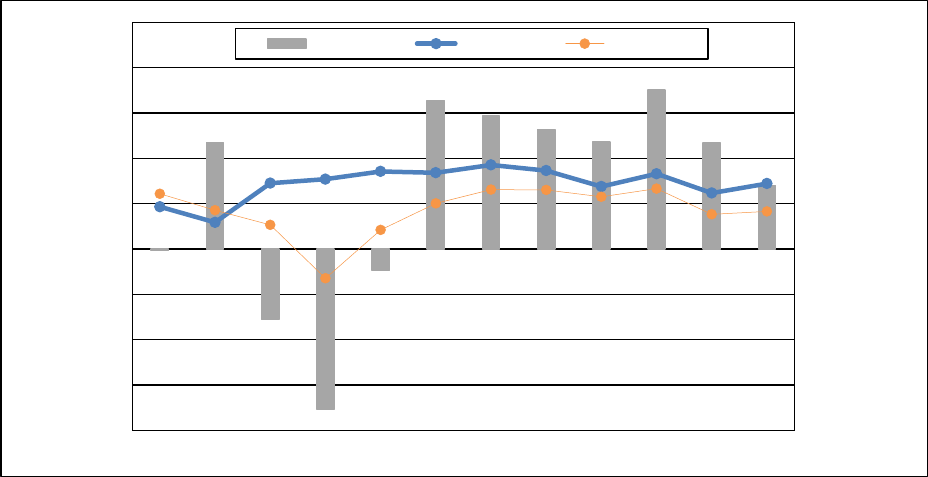
3
Overall Trends
The COVID-19 pandemic drastically changed travel patterns with a large decline of 11 percent
in VMT from 2019 to 2020. This year-to-year decline in VMT is the largest decline since the 22-
percent decline from 1942 to 1943. When the monthly VMT in 2020 was compared to 2019 we
saw a much different pattern as shown in Figure 1. In January and February of 2020, the monthly
pattern was the same as in 2019. As the Nation shut down and vehicular travel declined during
2020 in response to the pandemic, the 2020 monthly VMT started dropping in March and
continued to its lowest point in April followed by an increase in May as the States began their
phased re-opening at different times. By June the monthly 2020 VMT was similar in pattern as in
2019 but still below 2019 levels. Figure 1 also includes the 2020 monthly percentage change in
fatalities from 2019 with declines in January and from March to May as well as increases in
February and from June to December.
Sources: FARS 2019 Final File, 2020 ARF; 2019 Monthly VMT – FHWA’s December 2020 TVT; 2020 Monthly VMT – FHWA’s
December 2021 TVT
Figure 1. VMT and Percentage Change in Fatalities, by Month, 2019 and 2020
In 2020 there were 38,824 motor vehicle traffic fatalities in the United States, 2,469 more people
killed than the 36,355 fatalities in 2019, as shown in Figure 2. The traffic fatality count in 2020
is the highest since 2007 (41,259) and represents an increase after three consecutive years of
declines from 37,806 in 2016. The 2020 fatality rate per 100 million VMT (1.34) is the highest
since 2007 (1.36) and up from the 1.11 in 2019.
-20%
-15%
-10%
-5%
0%
5%
10%
15%
20%
25%
0
50,000
100,000
150,000
200,000
250,000
300,000
350,000
400,000
450,000
Jan Feb Mar Apr May Jun Jul Aug Sept Oct Nov Dec
2020 Percentage Change in Fatalities
from 2019
VMT (millions)
% Change 2019 VMT 2020 VMT
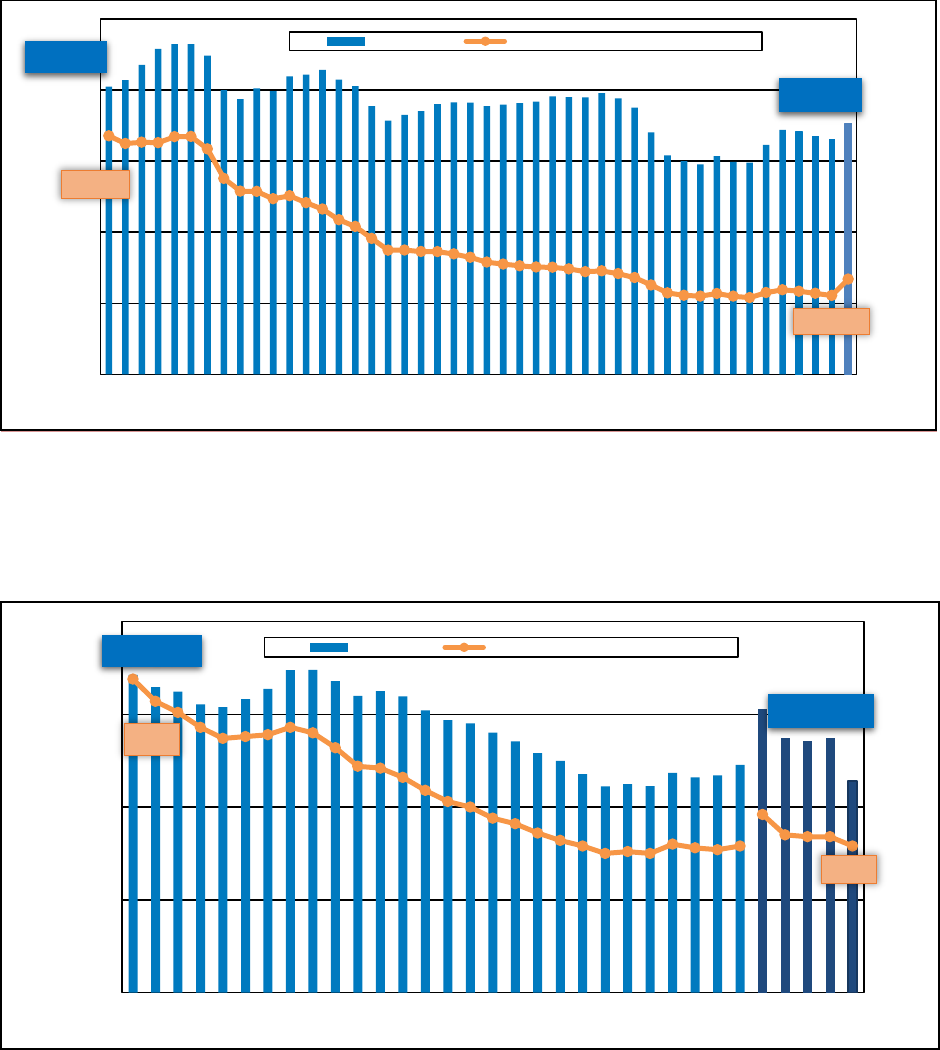
4
0.00
1.00
2.00
3.00
4.00
5.00
1975 1978 1981 1984 1987 1990 1993 1996 1999 2002 2005 2008 2011 2014 2017 2020
0
11,000
22,000
33,000
44,000
55,000
Fatality Rate per 100 Million VMT
Fatalities
Fatalities Fatality Rate Per 100 Million VMT
38,824
44,525
3.35
1.34
Sources: FARS 1975-2019 Final File, 2020 ARF; VMT – FHWA’s Annual Highway Statistics
Figure 2. Fatalities and Fatality Rate per 100 Million VMT, 1975-2020
In 2020 an estimated 2.28 million people were injured in motor vehicle traffic crashes, compared
to 2.74 million in 2019 as shown in Figure 3, a statistically significant decrease of 17 percent.
0
50
100
150
200
1988 1990 1992 1994 1996 1998 2000 2002 2004 2006 2008 2010 2012 2014 2016 2018 2020
0
1,000,000
2,000,000
3,000,000
4,000,000
Injury Rate per 100 Million VMT
People Injured
Injured Injury Rate Per 100 Million VMT
2,282,015
3,427,486
169
79
Sources: FARS 1988-2019 Final File, 2020 ARF; NASS GES 1988-2015; CRSS 2016-2020; VMT – FHWA’s Annual Highway
Statistics
Note: CRSS estimates and NASS GES estimates are not comparable due to different sample designs.
Figure 3. People Injured and Injury Rate per 100 Million VMT, 1988-2020

5
Fatality and Injury Rates
The fatality rate per 100 million VMT increased by 21 percent from 1.11 in 2019 to 1.34 in
2020, as shown in Table 1. This percentage increase is the largest increase on record. The injury
rate per 100 million VMT decreased by 6.0 percent from 84 in 2019 to 79 in 2020. Figures 2
and 3 display the fatality and injury rate trends over time.
Table 1. Fatality and Injury Rates per 100 Million VMT, 2019 and 2020
Rate
2019
2020
Change
% Change
Fatality Rate
1.11
1.34
+0.23
+21%
Injury Rate
84
79
-5
-6.0%
Sources: FARS 2019 Final File, 2020 ARF; CRSS 2019-2020; VMT – FHWA’s Annual
Highway Statistics.
Police-Reported Crashes
The estimated number of police-reported motor vehicle crashes decreased by 22 percent from
2019 to 2020, as presented in Table 2. This decrease is driven by the 22-percent decrease in non-
fatal injury crashes. PDO crashes, crashes in which there were no injuries to anyone involved,
decreased by 25 percent. These decreases are statistically significant at the .05 level of
significance. Only fatal crashes increased by 6.8 percent; fatal crashes are not tested for
statistical significance, because they are from a census of fatal motor vehicle traffic crashes. A
census is defined as actual counts, not estimates.
Table 2. Police-Reported Crashes, by Crash Severity, 2019 and 2020
Sources: FARS 2019 Final File, 2020 ARF; CRSS 2019-2020
*These estimates are statistically significant at the α=.05 level of significance.
Note: Fatal crash counts are not tested for statistical significance because they are a census.
Crash Severity 2019 2020 Change
%
Change
Total Police-Reported Crashes
6,756,084
5,250,837
-1,505,247
-22%*
Fatal Crashes
33,487
35,766
+2,279
+6.8%
Non-Fatal Crashes
6,722,597
5,215,071
-1,507,526
-22%*
Injury Crashes
1,916,344
1,593,390
-322,954
-17%*
Property-Damage-Only Crashes
4,806,253
3,621,681
-1,184,572
-25%*

6
People Killed and Injured, by Person Type
The comparison of fatality composition over the last decade, between 2011 and 2020, is shown
in Figure 4. The biggest change is in nonoccupant fatalities, as a proportion of overall traffic
fatalities, increasing from 16 percent in 2011 to 20 percent in 2020. Considering the same
comparison between 2011 and 2020, the percentage of passenger car occupant fatalities
decreased from 37 percent of all fatalities to 35 percent. The percentage of light-truck
1
occupant
fatalities decreased from 29 percent in 2011 to 27 percent in 2020. The proportion of
motorcyclist fatalities and the proportion of large truck,
2
bus, and other vehicle occupant
fatalities remained at 14 percent and 4 percent, respectively, in both years.
37%
29%
4%
14%
16%
2011
35%
27%
4%
14%
20%
2020
Passenger Car
Occupants
Light-Truck Occupants
Large-Truck, Bus, and
Other Vehicle Occupants
Motorcyclists
Pedestrians,
Pedalcyclists, and Other
Nonoccupants
Source: FARS 2011 Final File, 2020 ARF
Figure 4. Fatality Composition, by Person Type, 2011 and 2020
The proportion of people killed “inside the vehicle” (occupants of passenger cars, light trucks,
large trucks, buses, and other vehicles) has declined from a high of 80 percent in 1996 to 66
percent in 2020, as seen in Figure 5. Correspondingly, the proportion of people killed “outside
the vehicle” (motorcyclists, pedestrians, pedalcyclists, and other nonoccupants) has increased
from a low of 20 percent in 1996 to a high of 34 percent in 2020.
1
Includes SUVs, pickups, and vans.
2
Includes commercial and non-commercial trucks with gross vehicle weight rating (GVWR) of over 10,000 pounds.
This definition applies to any mention of "large trucks" throughout this report.
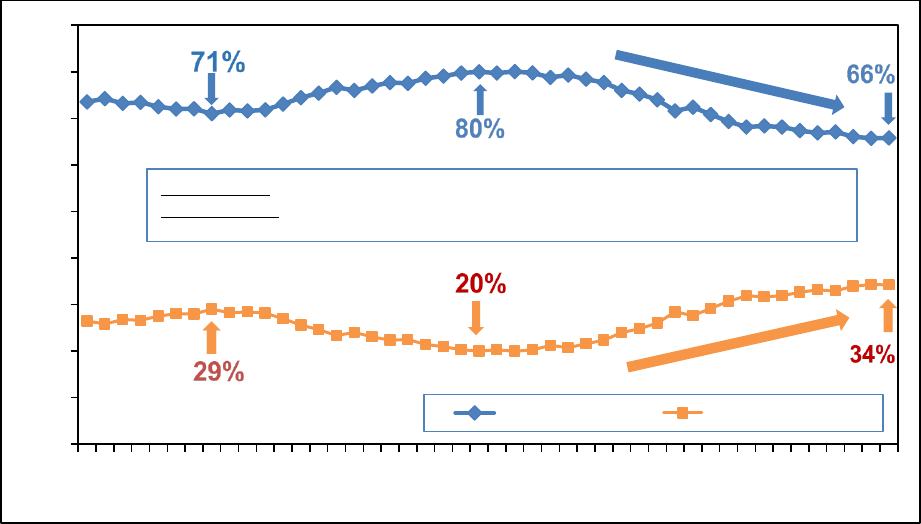
7
0%
10%
20%
30%
40%
50%
60%
70%
80%
90%
1975
1977
1979
1981
1983
1985
1987
1989
1991
1993
1995
1997
1999
2001
2003
2005
2007
2009
2011
2013
2015
2017
2019
Inside Vehicle Outside Vehicle
Inside Vehicle: Occupants of passenger cars, light trucks, large trucks, buses ,and other vehicles
Outside Vehicle: Motorcyclists, pedestrians, bicyclists, and other nonoccupants
Source: FARS 1975-2019 Final File, 2020 ARF
Figure 5. Proportion of Fatalities Inside/Outside Vehicle, 1975-2020
Table 3 presents the change from 2019 to 2020 in the number of occupant and nonoccupant
fatalities as well as the estimated number of occupants and nonoccupants injured.
Overall, most categories of occupant and nonoccupant fatalities increased from 2019 to 2020
except for van occupant fatalities and large-truck occupant fatalities. In summary for 2020:
• The number of passenger vehicle occupant fatalities increased by 1,452, a 6.5-percent
increase from 2019. Passenger vehicles include passenger cars and light trucks.
o Passenger car occupant fatalities increased by 1,117, a 9.0-percent increase from 2019.
o Light-truck occupant fatalities increased by 335, a 3.3-percent increase from 2019.
Of the light-truck categories, SUV and pickup occupant fatalities increased by 348
(+7.4%) and 117 (+2.8%) from 2019, respectively.
Only van occupant fatalities decreased by 92, a 9.0-percent decrease from 2019.
• Large-truck occupant fatalities decreased by 62, a 6.9-percent decrease from 2019.
• Motorcyclist fatalities increased by 535, an 11-percent increase from 2019.
• Pedestrian fatalities increased by 244, a 3.9-percent increase from 2019.
• Pedalcyclist fatalities increased by 79, a 9.2-percent increase from 2019.
The estimated number of people injured in 2020 declined by 17 percent from 2,740,141 in 2019
to 2,282,015 in 2020. All categories of occupants and nonoccupants injured decreased from 2019
to 2020; most were statistically significant decreases except for large-truck occupants and
motorcyclists injured.

8
In summary for 2020:
• Passenger vehicle occupants injured decreased by 413,141, a 17-percent decrease from 2019.
o Passenger car occupants injured decreased by 276,748, an 18-percent decrease from
2019.
o Light-truck occupants injured decreased by 136,393, a 14-percent decrease from 2019. Of
the light-truck categories, SUV occupants injured decreased the most by 69,282, a 12-
percent decrease from 2019.
• Large-truck occupants injured decreased by 754, a 1.7-percent decrease from 2019.
• Motorcyclists injured decreased by 1,286, a 1.5-percent decrease from 2019.
• Pedestrians injured decreased by 20,881, a 28-percent decrease from 2019.
• Pedalcyclists injured decreased by 10,171, a 21-percent decrease from 2019.
Table 3. Occupants and Nonoccupants Killed and Injured in Traffic Crashes, 2019 and 2020
Sources: FARS 2019 Final File, 2020 ARF; CRSS 2019-2020
*These estimates are statistically significant at the α=.05 level of significance.
**Includes occupants of buses and other/unknown vehicle types.
***Includes occupants of other/unknown light-truck vehicle types.
****Includes other/unknown nonoccupants.
Notes: Changes in fatalities are not tested for statistical significance because they are from a census. The year 2020 was a leap
year and there were 112 fatalities on February 29, 2020.
Description
Killed
Injured
2019 2020 Change
%
Change
2019 2020 Change
%
Change
Total
36,355
38,824
+2,469
+6.8%
2,740,141
2,282,015
-458,126
-17%*
Occupants
Total Occupants**
23,891
25,536
+1,645
+6.9%
2,516,003
2,093,246
-422,757
-17%*
Passenger Vehicles
22,372
23,824
+1,452
+6.5%
2,447,985
2,034,844
-413,141
-17%*
Passenger Cars 12,355 13,472 +1,117 +9.0%
1,498,083
1,221,335
-276,748
-18%*
Light Trucks***
10,017
10,352
+335
+3.3%
949,902
813,509
-136,393
-14%*
SUVs
4,727
5,075
+348
+7.4%
555,934
486,652
-69,282
-12%*
Pickups
4,213
4,330
+117
+2.8%
266,662
236,264
-30,398
-11%*
Vans
1,025
933
-92
-9.0%
122,928
88,724
-34,204
-28%*
Large Trucks 893 831 -62 -6.9%
45,688
44,934
-754
-1.7%
Motorcyclists
Motorcyclists
5,044
5,579
+535
+11%
83,814
82,528
-1,286
-1.5%
Nonoccupants
Total
Nonoccupants****
7,420 7,709 +289 +3.9% 140,324 106,241 -34,083 -24%*
Pedestrians
6,272
6,516
+244
+3.9%
75,650
54,769
-20,881
-28%*
Pedalcyclists
859
938
+79
+9.2%
49,057
38,886
-10,171
-21%*
9
Three Major Behavioral Factors: Speeding, Alcohol-Impaired Driving,
and Seat Belt Non-Use
NHTSA’s three major behavioral focus areas are speeding, alcohol-impaired driving, and seat
belt non-use. NHTSA considers a crash to be speeding-related if any driver in the crash was
charged with a speeding-related offense if a police officer indicated that racing, driving too fast
for conditions, or exceeding the posted speed limit was a contributing factor in the crash. A
speeding-related fatality is any fatality that occurs in a speeding-related crash. An alcohol-
impaired-driving fatality is defined as a fatality in a crash involving a driver or motorcycle rider
(operator) with a blood alcohol concentration (BAC) of .08 grams per deciliter (g/dL) or greater.
Estimates of alcohol-impaired driving are generated using BAC values reported to FARS and
BAC values imputed when they are not reported. Seat belt non-use indicates the occupant was
unrestrained.
These three major behavioral factors largely explain the fatality increases from 2019 to 2020,
although we cannot say that these factors were the only ones contributing to the rise in fatalities.
Figure 6 and Table 4 examine the monthly traffic fatalities involving each of the three behavioral
factors from 2019 to 2020. In summary for each month from 2019 to 2020 were the following.
• Speeding Involvement
o The monthly percentage changes for speeding-related fatalities were higher than the
monthly percentage changes for total traffic fatalities.
o Total traffic fatalities dropped in April 2020 (-18%), but speeding-related fatalities
actually increased (+2.0%).
• Alcohol-Impaired Driving
o The monthly percentage changes for alcohol-impaired-driving fatalities were higher than
the monthly percentage changes for total traffic fatalities.
• Passenger Vehicle Occupant Fatalities by Restraint Use
o The monthly percentage change for passenger vehicle occupant fatalities who were
unrestrained were higher than the monthly percentage changes for total passenger vehicle
occupant fatalities.
The only exception was in February, when the percentage change of passenger
vehicle occupant fatalities who were unrestrained (+12%) was lower than the
percentage change of total passenger vehicle occupant fatalities (+15%).
Unrestrained passenger vehicle occupant fatalities were flat in April 2020 (-0.7%)
when compared to the drop of total passenger vehicle fatalities (-18%).
Looking at the three major behavioral factors combined.
• In 2020 there were 1,938 unrestrained passenger vehicle occupant fatalities in crashes that
involved alcohol-impaired driving and speeding, a 23-percent increase from 1,581 for the
same metric in 2019.
• In 2020 there were 1,638 passenger vehicle drivers involved in fatal crashes who were
simultaneously unrestrained, alcohol-impaired, and speeding – a 21-percent increase from
1,357 in 2019.
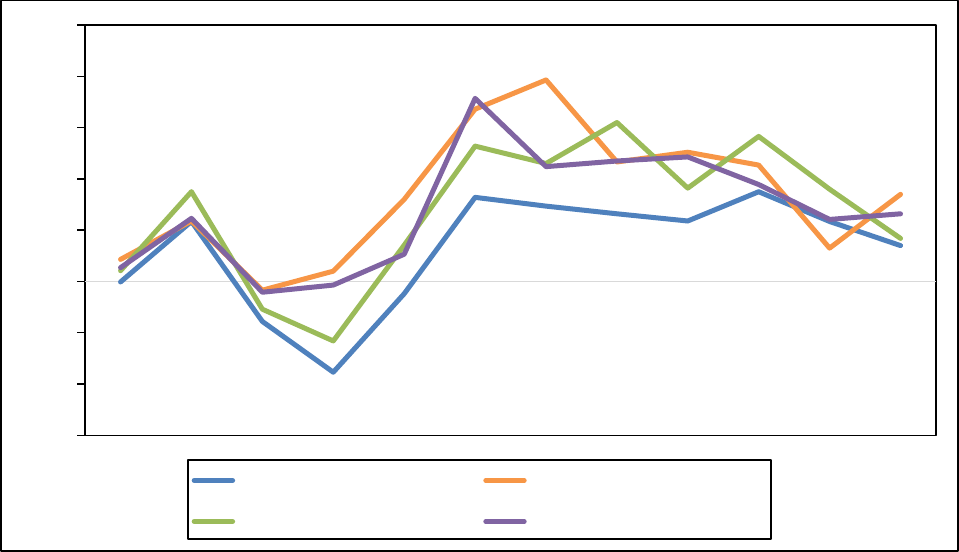
10
• Figure 7 provides a Venn diagram of passenger vehicle drivers involved in fatal crashes in
2020 by the three behavioral factors. Of the 41,144 passenger vehicle drivers involved in
2020:
o 18,370 had at least one of the three behavioral factors (45%);
10,674 were unrestrained (not excluding other behavioral factors [26%]);
• 5,023 were only unrestrained (12%);
8,643 were alcohol-impaired (not excluding other behavioral factors [21%]);
• 3,494 were only alcohol-impaired (8.5%);
7,725 were speeding (not excluding other behavioral factors [19%]);
• 2,819 were only speeding (6.9%);
2,128 were both alcohol-impaired and unrestrained (5.2%);
1,885 were both speeding and unrestrained (4.6%);
1,383 were both speeding and alcohol-impaired (3.4%);
1,638 were in all three behavioral factors simultaneously (4.0%);
o 22,774 did not have any of the three factors (55%).
Source: FARS 2019 Final File, 2020 ARF
Figure 6. 2020 Monthly Percentage Change From 2019 for Total Fatalities, Speeding-Related Fatalities,
Alcohol-Impaired-Driving Fatalities (AI), and Passenger Vehicle Occupant Fatalities Who Were
Unrestrained
-30%
-20%
-10%
0%
10%
20%
30%
40%
50%
Jan Feb Mar Apr May Jun Jul Aug Sep Oct Nov Dec
Total Fatalities % Change Speeding % Change
AI % Change Unrestrained % Change

11
Table 4. Monthly Traffic Fatalities, by Speeding Involvement, Alcohol-Impaired Driving, and Passenger
Vehicle Occupant Restraint Use, 2019 and 2020
Source: FARS 2019 Final File, 2020 ARF
*Based on rounded estimates for each month for alcohol-impaired-driving fatalities.
Description
Month
Jan
Feb
Mar
Apr
May
Jun
Jul
Aug
Sep
Oct
Nov
Dec
Total
Total Traffic Fatalities
2019 2,670 2,393 2,769 2,820 3,172 3,201 3,304 3,359 3,331 3,227 3,084 3,025
36,355
2020 2,666 2,674 2,553 2,320 3,096 3,725 3,789 3,802 3,724 3,793 3,445 3,237
38,824
Change -4 +281 -216 -500 -76 +524 +485 +443 +393 +566 +361 +212
+2,469
% Change -0.1% +12% -7.8% -18% -2.4% +16% +15% +13% +12% +18% +12% +7.0%
+6.8%
Fatalities by Speeding Involvement
Speeding-Related
2019
703 642 748 746 868
890
826
883
862
814
829
781
9,592
2020
733 718 735 761 1,007
1,189
1,151
1,089
1,079
999
883
914
11,258
Change
+30 +76 -13 +15 +139 +299 +325 +206 +217 +185 +54 +133
+1,666
% Change
+4.3%
+12%
-1.7%
+2.0%
+16%
+34%
+39%
+23%
+25%
+23%
+6.5%
+17%
+17%
Non-Speeding-Related
2019
1,967 1,751 2,021 2,074
2,304
2,311
2,478
2,476
2,469
2,413
2,255
2,244
26,763
2020
1,933 1,956 1,818 1,559
2,089
2,536
2,638
2,713
2,645
2,794
2,562
2,323
27,566
Change -34 +205 -203 -515 -215 +225 +160 +237 +176 +381 +307 +79
+803
% Change
-1.7%
+12%
-10%
-25%
-9.3%
+9.7%
+6.5%
+9.6%
+7.1%
+16%
+14%
+3.5%
+3.0%
Alcohol-Impaired-Driving Fatalities*
2019 708 653 812 785 886 932 956 939 939 858 865 864
10,196
2020 723 767 768 694 949 1,178 1,176 1,230 1,110 1,101 1,021 937
11,654
Change +15 +114 -44 -91 +63 +246 +220 +291 +171 +243 +156 +73
+1,458
% Change
+2.1%
+17%
-5.4%
-12%
+7.1%
+26%
+23%
+31%
+18%
+28%
+18%
+8.4%
+14%
Passenger Vehicle Occupant Fatalities by Restraint Use
Total (Unknown Restraint Use Included)
2019 1,762 1,538 1,746 1,772 1,933 1,905 1,891 1,911 1,889 1,977 2,010 2,038
22,372
2020 1,710 1,770 1,586 1,449 1,825 2,300 2,201 2,222 2,133 2,311 2,159 2,158
23,824
Change
-52
+232
-160
-323
-108
+395
+310
+311
+244
+334
+149
+120
+1,452
% Change -3.0% +15% -9.2% -18% -5.6% +21% +16% +16% +13% +17% +7.4% +5.9%
+6.5%
Restrained
2019 860 736 875 877 980 924 878 938 925 953 951 994
10,891
2020 792 843 753 581 782 968 948 995 896 1,017 972 936
10,483
Change
-68
+107
-122
-296
-198
+44
+70
+57
-29
+64
+21
-58
-408
% Change -7.9% +15% -14% -34% -20% +4.8% +8.0% +6.1% -3.1% +6.7% +2.2% -5.8%
-3.7%
Unrestrained
2019 750 681 704 722 812 802 843 821 798 854 868 868
9,523
2020 770 765 689 717 855 1,088 1,032 1,014 992 1,015 973 983
10,893
Change
+20
+84
-15
-5
+43
+286
+189
+193
+194
+161
+105
+115
+1,370
% Change +2.7% +12% -2.1% -0.7% +5.3% +36% +22% +24% +24% +19% +12% +13%
+14%
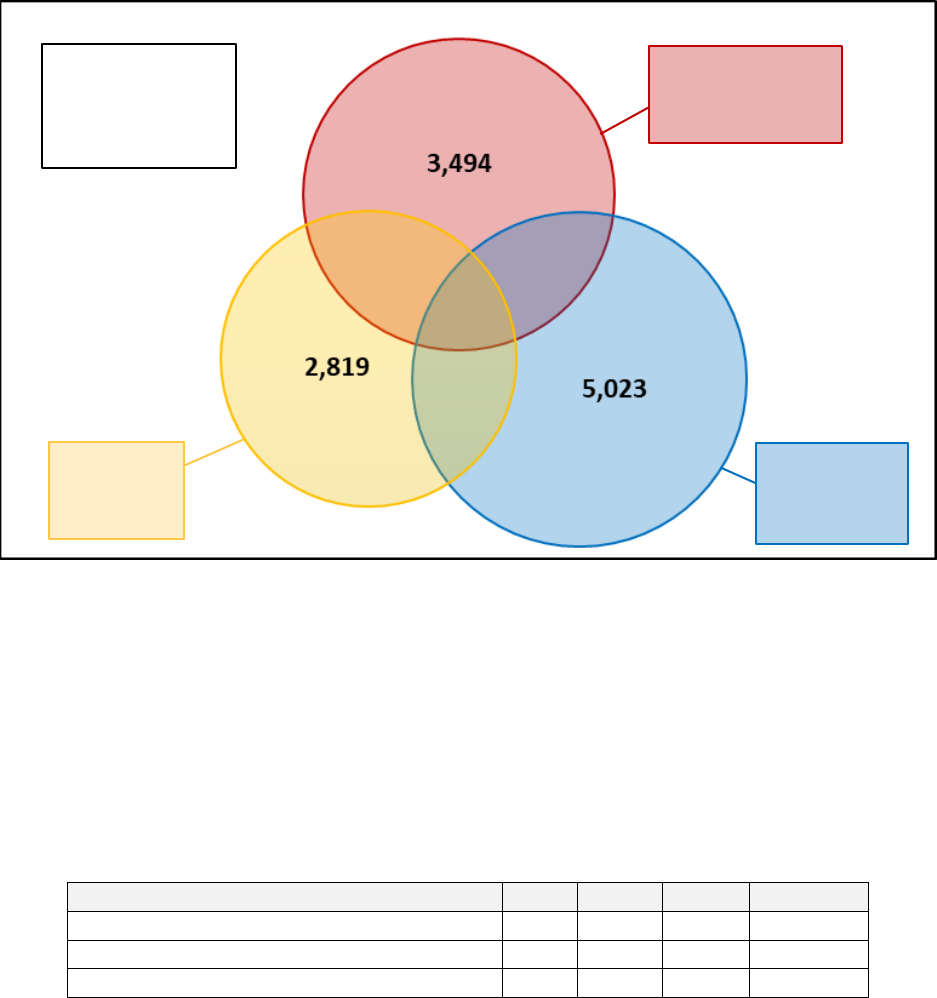
12
Total
Alcohol-Impaired
8,643
Total
Unrestrained
10,674
Total
Speeding
7,725
1,885
1,638
1,383
2,128
Total
Passenger Vehicle
Drivers Involved
41,144
Source: FARS 2020 ARF
Figure 7. Passenger Vehicle Drivers Involved in Fatal Crashes, by Speeding Involvement, Alcohol-
Impaired Driving, and Restraint Use
Alcohol-Impaired Driving
Alcohol-impaired-driving fatalities increased by 14 percent from 2019 to 2020 (Table 5),
accounting for 30 percent of 2020 overall fatalities. Alcohol-impaired-driving fatality rate per
100 million VMT increased by 29 percent from 0.31 in 2019 to 0.40 in 2020.
Table 5. Total and Alcohol-Impaired-Driving Fatalities, and Alcohol-Impaired-Driving (AI-Driving)
Fatality Rates per 100 Million VMT, 2019 and 2020
Sources: FARS 2019 Final File, 2020 ARF; VMT – FHWA’s Annual Highway Statistics
As shown in Table 6, drivers of all vehicle types saw increases in the number of alcohol-impaired drivers
involved in fatal crashes from 2019 to 2020, except for van drivers, which decreased by 13 percent.
Passenger car drivers had the largest number increase (+703) in alcohol-impaired drivers involved in fatal
crashes from 2019 to 2020. SUV drivers had the second largest number increase (+176).
2019
2020
Change
% Change
Total Fatalities
36,355
38,824
+2,469
+6.8%
Alcohol-Impaired-Driving Fatalities
10,196
11,654
+1,458
+14%
AI-Driving Fatality Rate per 100 Million VMT
0.31
0.40
+0.09
+29%

13
Table 6. Alcohol-Impaired Drivers Involved in Fatal Crashes, by Vehicle Type, 2019 and 2020
Source: FARS 2019 Final File, 2020 ARF
Vehicle Type
2019
2020
Change
% Change
Passenger Cars
4,023
4,726
+703
+17%
Light Truck – SUVs
1,630
1,806
+176
+11%
Light Truck – Pickups
1,813
1,883
+70
+3.9%
Light Truck – Vans
245
214
-31
-13%
Motorcycles
1,462
1,526
+64
+4.4%
Large Trucks
105
132
+27
+26%
Restraint Use and Time of Day
According to NHTSA’s National Occupant Protection Use Survey (NOPUS),
3
the estimated
passenger vehicle front-seat belt use for adults decreased from 90.7 percent in 2019 to 90.3
percent in 2020, but the change was not statistically significant at the .05 level.
The percentages reported in this section are all based on known restraint use (restraint use was
unknown for 10% of passenger vehicle occupant fatalities in 2020). Among passenger vehicle
occupants killed in 2020, more than half (51%) were unrestrained (Table 7). Fifty-eight percent
of those killed during the nighttime in 2020 were unrestrained as compared to 44 percent during
the daytime.
For those passenger vehicle occupants who survived in fatal crashes in 2020, only 16 percent
were unrestrained compared to 51 percent of those who died. During the nighttime, 18 percent of
passenger vehicle occupants who survived in fatal crashes were unrestrained as compared to 14
percent during the daytime.
3
Enriquez, J. (2021, September). Occupant restraint use in 2020: Results from the NOPUS controlled intersection
study (Report No. DOT HS 813 186). National Highway Traffic Safety Administration. Available at
https://crashstats.nhtsa.dot.gov/Api/Public/ViewPublication/813186

14
Table 7. Passenger Vehicle Occupants Involved in Fatal Crashes, by Restraint Use, Survival Status
and Time of Day, 2019 and 2020
Description 2019 2020 Change % Change
Restraint Use Percent
Based on Known Use
2019
2020
Passenger Vehicle Occupants Killed
Total
22,372
23,824
+1,452
+6.5%
Restrained
10,891
10,483
-408
-3.7%
53%
49%
Unrestrained
9,523
10,893
+1,370
+14%
47%
51%
Unknown
1,958
2,448
+490
+25%
Time of Day
Daytime
11,840
11,787
-53
-0.4%
Restrained
6,678
6,113
-565
-8.5%
61%
56%
Unrestrained
4,317
4,740
+423
+9.8%
39%
44%
Unknown
845
934
+89
+11%
Nighttime
10,345
11,846
+1,501
+15%
Restrained
4,150
4,319
+169
+4.1%
45%
42%
Unrestrained
5,110
6,034
+924
+18%
55%
58%
Unknown
1,085
1,493
+408
+38%
Passenger Vehicle Occupants Who Survived Fatal Crashes
Total
38,146
38,419
+273
+0.7%
Restrained
29,813
29,018
-795
-2.7%
86%
84%
Unrestrained
4,803
5,488
+685
+14%
14%
16%
Unknown
3,530
3,913
+383
+11%
Time of Day
Daytime
19,279
18,246
-1,033
-5.4%
Restrained
15,761
14,464
-1,297
-8.2%
88%
86%
Unrestrained
2,119
2,334
+215
+10%
12%
14%
Unknown
1,399
1,448
+49
+3.5%
Nighttime
18,804
20,095
+1,291
+6.9%
Restrained
14,018
14,517
+499
+3.6%
84%
82%
Unrestrained
2,677
3,131
+454
+17%
16%
18%
Unknown
2,109
2,447
+338
+16%
Source: FARS 2019 Final File, 2020 ARF
Note: Daytime and nighttime totals do not add up to total killed or total survived. Total includes unknown time of day.
Daytime – 6 a.m. to 5:59 p.m.
Nighttime – 6 p.m. to 5:59 a.m.

15
People Killed and Injured in Crashes Involving Large Trucks
Table 8 displays the number of people killed and the estimated number of people injured in
crashes involving large trucks from 2019 to 2020. Large trucks include commercial and non-
commercial trucks with GVWR (gross vehicle weight rating) of over 10,000 pounds.
Among fatalities in crashes involving large trucks in 2020:
• Nonoccupants killed increased by 52, a 9.1-percent increase from 2019.
• Large-truck occupant fatalities in single-vehicle crashes increased by 14, a 2.8-percent
increase from 2019.
• Occupants of other vehicles killed decreased by 57, a 1.6-percent decrease from 2019.
• Large-truck occupant fatalities in multiple-vehicle crashes decreased by 76, a 19-percent
decrease from 2019.
The estimated number of people injured in crashes involving large trucks decreased by 7.8
percent from 2019 to 2020. Among the estimated number of people injured in crashes involving
large trucks in 2020:
• Large-truck occupants injured in single-vehicle crashes increased by 4.1 percent from
2019.
• Large-truck occupants injured in multi-vehicle crashes decreased by 4.5 percent from
2019.
• Occupants of other vehicles who were injured decreased by 9.1 percent from 2019.
• Nonoccupants injured decreased by 40 percent from 2019, the only statistically
significant decrease in this table.
Table 8. People Killed and Injured in Crashes Involving Large Trucks, by Person Type, 2019 and 2020
Sources: FARS 2019 Final File, 2020 ARF; CRSS 2019-2020
*This estimate is statistically significant at the α=.05 level of significance.
Note: Fatalities are not tested for statistical significance because they are a census.
Person Type
Killed
Injured
2019 2020 Change
%
Change
2019 2020 Change
%
Change
Total
5,032
4,965
-67
-1.3%
159,359
146,930
-12,429
-7.8%
Large-Truck Occupants
893
831
-62
-6.9%
45,688
44,934
-754
-1.7%
In Single-Vehicle Crashes
494
508
+14
+2.8%
15,199
15,816
+617
+4.1%
In Multi-Vehicle Crashes
399
323
-76
-19%
30,490
29,118
-1,372
-4.5%
Other People
4,139
4,134
-5
-0.1%
113,670
101,997
-11,673
-10%
Other Vehicle Occupants
3,569
3,512
-57
-1.6%
109,515
99,501
-10,014
-9.1%
Nonoccupants
570
622
+52
+9.1%
4,156
2,496
-1,660
-40%*

16
Fatalities by Land Use (Rural/Urban)
As shown in Figure 8, the number of fatalities on urban roadways has been larger than the
number of fatalities on rural roadways since 2016. From 2019 to 2020 urban fatalities increased
by 8.5 percent and rural fatalities increased by 2.3 percent. In 2020 of the 2,469 increase in
fatalities, 69 percent (1,704) were in urban areas.
Source: FARS 2011-2019 Final File, 2020 ARF
Note: Excludes unknown land use.
Figure 8. Fatalities, by Land Use, 2011-2020
Table 9 compares rural and urban characteristics in two different time periods: 10-year
comparison (2011 and 2020) and 2-year comparison (2019 and 2020).
10-year (2011 and 2020) comparison summary:
• According to the Census Bureau, urban population increased by 13 percent from 2010 to
2019 (2020 rural/urban population estimates are not yet available); rural population
decreased by 15 percent.
• Urban VMT increased by 1.3 percent since 2011; rural VMT decreased by 6.8 percent.
• Urban fatalities increased by 48 percent since 2011; rural fatalities decreased by 6.2
percent.
• Urban fatality rate per 100 million VMT increased by 46 percent from 0.74 in 2011 to
1.08 in 2020; rural fatality rate increased by 0.5 percent from 1.83 in 2011 to 1.84 in
2020.
• Passenger vehicle occupant fatalities in urban areas increased by 45 percent since 2011;
they decreased by 9.4 percent in rural areas.
• Motorcyclist fatalities in urban areas increased by 42 percent since 2011; they decreased
by 5.0 percent in rural areas.
• Pedestrian fatalities in urban areas increased by 61 percent since 2011; they decreased by
0.9 percent in rural areas.
17,769
18,367
17,739
16,791
17,715
18,321
17,405
16,070
16,288
16,665
14,575
15,371
15,119
15,917
17,573
19,357
19,976
20,661
19,946
21,650
0
5,000
10,000
15,000
20,000
25,000
2011 2012 2013 2014 2015 2016 2017 2018 2019 2020
Rural
Urban

17
• Pedalcyclist fatalities in urban areas increased by 54 percent since 2011; they decreased
by 9.1 percent in rural areas.
2-year (2019 and 2020) comparison summary:
• According to the Census Bureau, urban population did not change much from 2018 to
2019 (2020 rural/urban population estimates are not yet available); rural population
increased by 1.7 percent.
• Urban VMT decreased by 12 percent since 2019; rural VMT decreased by 8.2 percent.
• Urban fatalities increased by 8.5 percent since 2019; rural fatalities increased by 2.3
percent.
• Urban fatality rate per 100 million VMT increased by 23 percent from 0.88 in 2019 to
1.08 in 2020; rural fatality rate increased by 11 percent from 1.66 in 2019 to 1.84 in
2020.
• Passenger vehicle occupant fatalities in urban areas increased by 13 percent since 2019;
they decreased by 0.3 percent in rural areas.
• Motorcyclist fatalities in urban areas increased by 7.8 percent since 2019; they increased
by 11 percent in rural areas.
• Pedestrian fatalities in urban areas increased by 1.5 percent since 2019; they increased by
8.0 percent in rural areas.
• Pedalcyclist fatalities in urban areas increased by 5.5 percent since 2019; they increased
by 9.2 percent in rural areas.
Table 9. 10-Year (2011 and 2020) and 2-Year (2019 and 2020) Comparison of Land Use Characteristics
Sources: Population – Census Bureau; VMT – FHWA’s Annual Highway Statistics; FARS 2011 and 2019 Final File, 2020 ARF
*Population percentage change from 2010 to 2019 as 2020 rural/urban population estimates are not yet available.
**Population percentage change from 2018 to 2019 as 2020 rural/urban population estimates are not yet available.
Characteristics
Urban
Percentage
Change
Rural
Percentage
Change
Urban
Percentage
Change
Rural
Percentage
Change
10-Year Comparison 2-Year Comparison
Population
+13%*
-15%*
0.0%**
+1.7%**
VMT
+1.3%
-6.8%
-12%
-8.2%
Total Fatalities
+48%
-6.2%
+8.5%
+2.3%
Fatality Rate per 100 Million VMT
+46%
+0.5%
+23%
+11%
Passenger Vehicle Occupant Fatalities
+45%
-9.4%
+13%
-0.3%
Motorcyclist Fatalities
+42%
-5.0%
+7.8%
+11%
Pedestrian Fatalities
+61%
-0.9%
+1.5%
+8.0%
Pedalcyclist Fatalities
+54%
-9.1%
+5.5%
+9.2%
18
Additional Facts
• Nighttime (6 p.m. to 5:59 a.m.) fatalities increased by 12 percent (18,573 in 2019 to 20,729
in 2020). In comparison, daytime (6 a.m. to 5:59 p.m.) traffic fatalities increased by 1.4
percent (17,518 in 2019 to 17,764 in 2020).
• Weekend (Friday 6 p.m. to Monday 5:59 a.m.) fatalities increased by 9.5 percent (14,637 in
2019 to 16,022 in 2020). In comparison, weekday (Monday 6 a.m. to Friday 5:59 p.m.)
fatalities increased by 5.0 percent (21,643 in 2019 to 22,718 in 2020).
• Male fatalities increased by 8.6 percent (25,819 in 2019 to 28,033 in 2020), and female
fatalities increased by 1.9 percent (10,495 in 2019 to 10,690 in 2020).
• There were fewer fatalities among people 9 and younger and people 65 and older from 2019
to 2020. Most fatality increases were people 10 to 64, with the 25-34 age group having the
largest increase of 1,117 additional fatalities (6,596 in 2019 to 7,713 in 2020 or a 17-percent
increase).
• Fatal crashes involving young drivers 15 to 20 years old increased by 14 percent from 3,863
in 2019 to 4,405 in 2020.
• Fatalities in single-vehicle crashes increased by 9.4 percent (19,877 in 2019 to 21,741 in
2020). In comparison, fatalities in multi-vehicle crashes increased by 3.7 percent (16,478 in
2019 to 17,083 in 2020).
• Passenger vehicle occupants killed in rollover crashes increased by 13 percent (6,316 in 2019
to 7,107 in 2020).
• In 2020 of the 23,824 passenger vehicle occupants killed, 23 percent (5,419) were ejected
from the vehicles, a 21-percent increase from 4,493 occupants ejected and killed in 2019.
• The number of passenger vehicle occupants killed increased by 7.5 percent in vehicles 10
years and older (14,212 in 2019 to 15,284 in 2020). In comparison, those killed in newer
vehicles increased by 4.9 percent (8,121 in 2019 to 8,517 in 2020).
• There were 2,564 fatalities in crashes involving hit-and-run drivers in 2020, an increase of 26
percent from 2,037 in 2019.
o Of the 6,516 pedestrian fatalities, 1,582 (24%) were involved in hit-and-run crashes in
2020.
o Of the 938 pedalcyclist fatalities, 202 (22%) were involved in hit-and-run crashes in
2020.
• The number of fatalities in distraction-affected crashes, i.e., a crash involving at least one
driver who was distracted, was 3,142 or 8.1 percent of all fatalities in 2020. This represents a
0.7-percent increase from 3,119 in 2019.
• The number of fatalities involving drowsy drivers was 633 or 1.6 percent of total fatalities in
2020. This represents a 9.2-percent decrease from 697 in 2019.
• Table 10 below shows the 2-year and 10-year trends of drivers involved in fatal crashes. The
most noticeable change is the trends for the older population (65+), a vulnerable age group
during the COVID-19 pandemic.
o From 2019 to 2020, drivers 65+ involved in fatal crashes dropped 9.8 percent; all other
age groups increased.
o Also affected is the 10-year trend of drivers 65+ involved in fatal crashes. From last
year’s 10-year trend (2010-2019), drivers 65+ involved had the highest percentage
change (+37%) compared to the other age group.

19
o However, from 2011 to 2020 the percentage change for the 25-44 age group (+33%) is
higher than the percentage change for the 65+ age group (+26%). These trend changes are
expected to be temporary.
Table 10. Comparison of 2-Year and 10-Year Percentage Change of All Drivers Involved in Fatal
Crashes With 10-Year Percentage Change of Population Estimate and 10-Year Percentage Change of
Licensed Driver Data, by Age Group
Sources: FARS 2011 and 2019 Final File, 2020 ARF; Population – Census Bureau; and Licensed Drivers – FHWA
*Includes those who were under 15 years old.
Age
Group
Percentage Change of All Drivers
Involved in Fatal Crashes
10-Year
Percentage Change
of
Population
Estimates
(2011 and 2020)
10-Year
Percentage Change
of Licensed Driver
Data (2010 and
2019, 2020 not
available)
2-Year
Comparison (2019
and 2020)
10-Year
Comparison (2011
and 2020)
15-24
+9.4%
+6.7%
-2.9%
-2.8%
25-44
+9.8%
+33%
+7.0%
+6.3%
45-64
+1.5%
+15%
0.0%
+2.8%
65+
-9.8%
+26%
+35%
+37%
Total*
+5.0%
+23%
+5.7%
+8.8%

20
State Data
Figure 9 displays a map of 2020 traffic fatalities by State and the percentage changes from 2019.
Figure 10 contains a color-coded map of the percentage of alcohol-impaired-driving fatalities by
State in 2020.
Source: FARS 2019 Final File, 2020 ARF
Note: Puerto Rico is not included in the U.S. total.
Figure 9. 2020 Traffic Fatalities and Percentage Changes from 2019, by State

21
Source: FARS 2020 ARF
Figure 10. Alcohol-Impaired-Driving Fatalities as Percentages of Total Fatalities, by State, 2020
Figure 11 shows the 10 NHTSA Regions along with the number changes in traffic fatalities and
the percentage changes from 2019 to 2020 for each Region. All NHTSA Regions had increases
in fatalities.
+53,
+3.5%
+180,
3.7%
+85,
+5.7%
+451,
+7.5%
+235,
+9.8%
+461,
+5.9%
+184,
+4.6%
+207,
+6.7%
+524,
+11%
+42,
+6.0%
Region 10
Region 9
Region 8
Region 6
Region 7
Region 4
Region 3
Region 5
Region 1
Region 2*
Source: FARS 2019 Final File, 2020 ARF
*Includes Puerto Rico.
Figure 11. 2020 Number Changes and Percentage Changes in Traffic Fatalities From 2019,
by NHTSA Region

22
Table 11 presents the total number of motor vehicle traffic crash fatalities and the number of
alcohol-impaired-driving fatalities for 2019 and 2020, the changes in the number of fatalities,
and the percentage changes for each State, the District of Columbia, and Puerto Rico. Forty-two
States and the District of Columbia had increases in the number of fatalities. In 2020 the largest
increase was in Texas, with 255 more fatalities. Seven States and Puerto Rico had fewer fatalities
in 2020 than in 2019. Excluding Puerto Rico, New Mexico had the largest reduction with 27
fewer fatalities. Only North Dakota had no change.
Nationwide, 30 percent of the total fatalities were in alcohol-impaired-driving crashes. Forty
States saw increases in the number of alcohol-impaired-driving fatalities from 2019 to 2020.
California had the largest increase, with 193 more lives lost in alcohol-impaired-driving crashes
in 2020. The District of Columbia had no change in the number of alcohol-impaired-driving
fatalities from 2019 to 2020. Ten States and Puerto Rico saw decreases in the number of alcohol-
impaired-driving fatalities from 2019 to 2020, with 36 fewer fatalities in Alabama.
Table 12 presents the State-level fatality rate per 100 million VMT as well as the alcohol-
impaired-driving fatality rate per 100 million VMT for 2019 and 2020. In summary for 2020:
• The total traffic fatality rate per 100 million VMT ranged from a high of 1.97 (South
Carolina) to a low of 0.63 (Massachusetts), relative to the U.S. fatality rate of 1.34.
• The alcohol-impaired-driving fatality rate per 100 million VMT ranged from a high of 0.79
(Montana) to a low of 0.18 (Massachusetts), relative to the U.S. fatality rate of 0.40.
For additional information, refer to Appendices A and B.
• Appendix A
o Table 13 – Total Fatalities, by State and Person Type, 2019 and 2020
o Table 14 – Total Fatalities, by State and Speeding Involvement, 2019 and 2020
• Appendix B – Subcategories include monthly analysis by person type and various crash
characteristics. For most categories, the lowest point was during April, followed by increases
during the remainder of the year.
o Table 15 – Monthly Traffic Fatalities, by Subcategories, 2019 and 2020
o Table 16 – Monthly Traffic Fatalities, by Age Group, 2019 and 2020
Table 11. Total and Alcohol-Impaired-Driving Fatalities, by State, 2019 and 2020
State
2019
2020
2019 to 2020 Change
Total
Fatalities
Alcohol-Impaired-
Driving Fatalities
Total
Fatalities
Alcohol-Impaired-
Driving Fatalities
Total Fatalities
Alcohol-Impaired-
Driving Fatalities
Number Percent Number Percent Change
%
Change
Change
%
Change
Alabama
930
272
29%
934
236
25%
+4
+0.4%
-36
-13.2%
Alaska
67
21
32%
64
14
22%
-3
-4.5%
-7
-33.3%
Arizona
979
259
26%
1,054
293
28%
+75
+7.7%
+34
+13.1%
Arkansas
511
131
26%
638
166
26%
+127
+24.9%
+35
+26.7%
California
3,719
966
26%
3,847
1,159
30%
+128
+3.4%
+193
+20.0%
Colorado
597
160
27%
622
186
30%
+25
+4.2%
+26
+16.3%
Connecticut
249
98
39%
295
118
40%
+46
+18.5%
+20
+20.4%

23
State
2019
2020
2019 to 2020 Change
Total
Fatalities
Alcohol-Impaired-
Driving Fatalities
Total
Fatalities
Alcohol-Impaired-
Driving Fatalities
Total Fatalities
Alcohol-Impaired-
Driving Fatalities
Number Percent Number Percent Change
%
Change
Change
%
Change
Delaware
132
32
24%
116
27
23%
-16
-12.1%
-5
-15.6%
District of Columbia
23
7
30%
36
7
21%
+13
+56.5%
0
0.0%
Florida
3,185
775
24%
3,331
871
26%
+146
+4.6%
+96
+12.4%
Georgia
1,492
355
24%
1,664
402
24%
+172
+11.5%
+47
+13.2%
Hawaii
108
36
33%
85
27
31%
-23
-21.3%
-9
-25.0%
Idaho
224
69
31%
214
61
29%
-10
-4.5%
-8
-11.6%
Illinois
1,009
311
31%
1,194
379
32%
+185
+18.3%
+68
+21.9%
Indiana
810
200
25%
897
249
28%
+87
+10.7%
+49
+24.5%
Iowa
336
102
30%
337
113
34%
+1
+0.3%
+11
+10.8%
Kansas
410
87
21%
426
96
23%
+16
+3.9%
+9
+10.3%
Kentucky
732
151
21%
780
199
26%
+48
+6.6%
+48
+31.8%
Louisiana
727
214
29%
828
233
28%
+101
+13.9%
+19
+8.9%
Maine
157
49
31%
164
64
39%
+7
+4.5%
+15
+30.6%
Maryland
535
167
31%
567
183
32%
+32
+6.0%
+16
+9.6%
Massachusetts
336
112
33%
343
98
29%
+7
+2.1%
-14
-12.5%
Michigan
986
264
27%
1,084
306
28%
+98
+9.9%
+42
+15.9%
Minnesota
364
85
23%
394
107
27%
+30
+8.2%
+22
+25.9%
Mississippi
642
166
26%
752
162
21%
+110
+17.1%
-4
-2.4%
Missouri
881
236
27%
987
312
32%
+106
+12.0%
+76
+32.2%
Montana
184
66
36%
213
96
45%
+29
+15.8%
+30
+45.5%
Nebraska
248
60
24%
233
73
31%
-15
-6.0%
+13
+21.7%
Nevada
304
89
29%
317
83
26%
+13
+4.3%
-6
-6.7%
New Hampshire
101
38
38%
104
37
36%
+3
+3.0%
-1
-2.6%
New Jersey
558
129
23%
584
151
26%
+26
+4.7%
+22
+17.1%
New Mexico
425
125
29%
398
130
33%
-27
-6.4%
+5
+4.0%
New York
934
256
27%
1,046
286
27%
+112
+12.0%
+30
+11.7%
North Carolina
1,457
386
27%
1,538
454
30%
+81
+5.6%
+68
+17.6%
North Dakota
100
42
42%
100
35
35%
0
0.0%
-7
-16.7%
Ohio
1,153
362
31%
1,230
448
36%
+77
+6.7%
+86
+23.8%
Oklahoma
640
156
24%
652
179
27%
+12
+1.9%
+23
+14.7%
Oregon
493
171
35%
508
191
38%
+15
+3.0%
+20
+11.7%
Pennsylvania
1,059
299
28%
1,129
322
29%
+70
+6.6%
+23
+7.7%
Rhode Island
57
24
41%
67
28
42%
+10
+17.5%
+4
+16.7%
South Carolina
1,006
276
27%
1,064
315
30%
+58
+5.8%
+39
+14.1%
South Dakota
102
28
28%
141
49
35%
+39
+38.2%
+21
+75.0%
Tennessee
1,136
289
25%
1,217
326
27%
+81
+7.1%
+37
+12.8%
Texas
3,619
1,338
37%
3,874
1,495
39%
+255
+7.0%
+157
+11.7%
Utah
248
38
15%
276
58
21%
+28
+11.3%
+20
+52.6%
Vermont
47
9
19%
62
18
28%
+15
+31.9%
+9
+100.0%
Virginia
831
237
29%
850
286
34%
+19
+2.3%
+49
+20.7%
Washington
538
181
34%
560
199
35%
+22
+4.1%
+18
+9.9%
West Virginia
260
56
22%
267
76
29%
+7
+2.7%
+20
+35.7%

24
State
2019
2020
2019 to 2020 Change
Total
Fatalities
Alcohol-Impaired-
Driving Fatalities
Total
Fatalities
Alcohol-Impaired-
Driving Fatalities
Total Fatalities
Alcohol-Impaired-
Driving Fatalities
Number Percent Number Percent Change
%
Change
Change
%
Change
Wisconsin
567
186
33%
614
210
34%
+47
+8.3%
+24
+12.9%
Wyoming
147
33
23%
127
44
34%
-20
-13.6%
+11
+33.3%
U.S. Total*
36,355
10,196
28%
38,824
11,654
30%
+2,469
+6.8%
+1,458
+14.3%
Puerto Rico 289 78 27% 242 77 32% -47 -16.3% -1 -1.3%
Source: FARS 2019 Final File, 2020 ARF
*Puerto Rico is not included in the U.S. total.
Notes: Percentages of alcohol-impaired-driving fatalities are computed based on unrounded estimates. Year-to-year percentage changes in
alcohol-impaired-driving fatalities are based on rounded estimates.
Table 12. Fatality Rate and Alcohol-Impaired-Driving Fatality Rate per 100 Million VMT,
by State, 2019 and 2020
State
2019
2020
VMT
(millions)
Total Fatalities
Alcohol-
Impaired-Driving
Fatalities
VMT
(millions)
Total Fatalities
Alcohol-
Impaired-Driving
Fatalities
Number
Rate
Number
Rate
Number
Rate
Number
Rate
Alabama 71,735 930 1.30 272 0.38 67,921 934 1.38 236 0.35
Alaska
5,881
67
1.14
21
0.36
5,306
64
1.21
14
0.26
Arizona 70,281 979 1.39 259 0.37 65,758 1,054 1.60 293 0.45
Arkansas
37,099
511
1.38
131
0.35
33,919
638
1.88
166
0.49
California 340,836 3,719 1.09 966 0.28 299,812 3,847 1.28 1,159 0.39
Colorado
54,634
597
1.09
160
0.29
48,642
622
1.28
186
0.38
Connecticut 31,601 249 0.79 98 0.31 29,845 295 0.99 118 0.40
Delaware
10,245
132
1.29
32
0.31
8,345
116
1.39
27
0.32
Dist of Columbia 3,756 23 0.61 7 0.19 3,030 36 1.19 7 0.23
Florida
226,514
3,185
1.41
775
0.34
208,076
3,331
1.60
871
0.42
Georgia 133,128 1,492 1.12 355 0.27 115,967 1,664 1.43 402 0.35
Hawaii
11,024
108
0.98
36
0.33
8,785
85
0.97
27
0.31
Idaho 18,058 224 1.24 69 0.38 17,406 214 1.23 61 0.35
Illinois
107,525
1,009
0.94
311
0.29
94,121
1,194
1.27
379
0.40
Indiana 82,719 810 0.98 200 0.24 76,608 897 1.17 249 0.33
Iowa
33,537
336
1.00
102
0.30
29,751
337
1.13
113
0.38
Kansas 31,843 410 1.29 87 0.27 27,854 426 1.53 96 0.34
Kentucky
49,410
732
1.48
151
0.31
46,536
780
1.68
199
0.43
Louisiana 51,360 727 1.42 214 0.42 48,374 828 1.71 233 0.48
Maine
14,871
157
1.06
49
0.33
13,086
164
1.25
64
0.49
Maryland 60,216 535 0.89 167 0.28 50,885 567 1.11 183 0.36
Massachusetts
64,890
336
0.52
112
0.17
54,127
343
0.63
98
0.18
Michigan 102,174 986 0.97 264 0.26 86,547 1,084 1.25 306 0.35
Minnesota
60,731
364
0.60
85
0.14
51,619
394
0.76
107
0.21
Mississippi 41,091 642 1.56 166 0.40 39,665 752 1.90 162 0.41
Missouri
79,168
881
1.11
236
0.30
72,797
987
1.36
312
0.43
Montana 12,892 184 1.43 66 0.51 12,104 213 1.76 96 0.79

25
State
2019
2020
VMT
(millions)
Total Fatalities
Alcohol-
Impaired-Driving
Fatalities
VMT
(millions)
Total Fatalities
Alcohol-
Impaired-Driving
Fatalities
Number
Rate
Number
Rate
Number
Rate
Number
Rate
Nebraska
21,242
248
1.17
60
0.28
19,432
233
1.20
73
0.38
Nevada
28,794
304
1.06
89
0.31
25,231
317
1.26
83
0.33
New Hampshire
13,828
101
0.73
38
0.27
11,956
104
0.87
37
0.31
New Jersey
78,205
558
0.71
129
0.16
66,341
584
0.88
151
0.23
New Mexico
27,772
425
1.53
125
0.45
23,756
398
1.68
130
0.55
New York
123,986
934
0.75
256
0.21
102,477
1,046
1.02
286
0.28
North Carolina
122,475
1,457
1.19
386
0.32
106,342
1,538
1.45
454
0.43
North Dakota
9,826
100
1.02
42
0.43
8,768
100
1.14
35
0.40
Ohio
114,694
1,153
1.01
362
0.32
103,115
1,230
1.19
448
0.43
Oklahoma
44,648
640
1.43
156
0.35
42,000
652
1.55
179
0.43
Oregon
35,808
493
1.38
171
0.48
32,298
508
1.57
191
0.59
Pennsylvania
102,864
1,059
1.03
299
0.29
87,982
1,129
1.28
322
0.37
Rhode Island
7,581
57
0.75
24
0.32
6,864
67
0.98
28
0.41
South Carolina
57,939
1,006
1.74
276
0.48
53,972
1,064
1.97
315
0.58
South Dakota
9,922
102
1.03
28
0.28
9,743
141
1.45
49
0.50
Tennessee
82,892
1,136
1.37
289
0.35
76,392
1,217
1.59
326
0.43
Texas
288,227
3,619
1.26
1,338
0.46
260,582
3,874
1.49
1,495
0.57
Utah
32,911
248
0.75
38
0.12
30,251
276
0.91
58
0.19
Vermont
7,346
47
0.64
9
0.12
6,007
62
1.03
18
0.30
Virginia
85,432
831
0.97
237
0.28
76,110
850
1.12
286
0.38
Washington
62,530
538
0.86
181
0.29
53,658
560
1.04
199
0.37
West Virginia
19,077
260
1.36
56
0.29
16,054
267
1.66
76
0.47
Wisconsin
66,348
567
0.85
186
0.28
57,600
614
1.07
210
0.36
Wyoming
10,208
147
1.44
33
0.32
9,800
127
1.30
44
0.45
U.S. Total*
3,261,772
36,355
1.11
10,196
0.31
2,903,622
38,824
1.34
11,654
0.40
Puerto Rico 14,710 289 1.96 78 0.53 13,762 242 1.76 77 0.56
Sources: FARS 2019 Final File, 2020 ARF; VMT – F
HWA’s Annual Highway Statistics
*Puerto Rico is not included in the U.S. total.

A-1
Appendix A
Table 13. Total Fatalities, by State and Person Type, 2019 and 2020
State
Total Fatalities
Change From
2019 to 2020
Passenger Car
Occupants
Light-Truck
Occupants
Other/Unknown
Vehicle
Occupants**
2019
2020
Number
Percentage
2019
2020
2019
2020
2019
2020
Alabama 930
934
+4
+0.4%
362
395
311 310 38 38
Alaska
67
64
-3
-4.5%
17
16
31
23
5
6
Arizona 979
1,054
+75
+7.7%
239
293
237 214 80 119
Arkansas
511
638
+127
+24.9%
168
198
185
231
24
41
California 3,719
3,847
+128
+3.4%
1,227
1,368
717 693 78 80
Colorado
597
622
+25
+4.2%
169
153
202
198
27
23
Connecticut 249
295
+46
+18.5%
83
116
54 52 8 6
Delaware
132
116
-16
-12.1%
45
39
27
34
2
0
Dist of Columbia 23
36
+13
+56.5%
7
13
3 4 0 1
Florida
3,185
3,331
+146
+4.6%
974
1,041
611
704
95
96
Georgia 1,492
1,664
+172
+11.5%
550
602
440 470 60 88
Hawaii
108
85
-23
-21.3%
21
24
25
16
1
2
Idaho 224
214
-10
-4.5%
66
78
100 78 15 13
Illinois
1,009
1,194
+185
+18.3%
380
481
263
295
38
55
Indiana 810
897
+87
+10.7%
303
335
252 254 29 37
Iowa
336
337
+1
+0.3%
102
107
135
98
24
30
Kansas 410
426
+16
+3.9%
148
138
167 150 28 23
Kentucky
732
780
+48
+6.6%
306
314
220
227
33
46
Louisiana 727
828
+101
+13.9%
238
267
220 267 36 34
Maine
157
164
+7
+4.5%
53
57
50
57
8
9
Maryland 535
567
+32
+6.0%
208
219
101 103 13 11
Massachusetts
336
343
+7
+2.1%
118
145
82
68
8
12
Michigan 986
1,084
+98
+9.9%
370
327
275 343 33 25
Minnesota
364
394
+30
+8.2%
134
122
104
123
19
28
Mississippi 642
752
+110
+17.1%
288
304
215 233 24 38
Missouri
881
987
+106
+12.0%
305
396
270
283
54
48
Montana 184
213
+29
+15.8%
51
71
66 80 24 15
Nebraska
248
233
-15
-6.0%
90
84
101
74
10
21
Nevada 304
317
+13
+4.3%
91
85
67 68 12 12
New Hampshire
101
104
+3
+3.0%
36
40
25
16
0
5
New Jersey 558
584
+26
+4.7%
189
207
71 95 19 9
New Mexico
425
398
-27
-6.4%
108
99
140
141
30
23
New York 934
1,046
+112
+12.0%
256
331
177 187 35 40
North Carolina
1,457
1,538
+81
+5.6%
568
630
393
408
40
47
North Dakota 100
100
0
0.0%
24
22
45 39 12 13
Ohio
1,153
1,230
+77
+6.7%
446
478
334
313
53
44
Oklahoma 640
652
+12
+1.9%
210
195
225 258 35 37
Oregon
493
508
+15
+3.0%
169
161
149
134
22
52
Pennsylvania 1,059
1,129
+70
+6.6%
384
417
281 252 49 67
Rhode Island
57
67
+10
+17.5%
26
30
9
4
0
1
South Carolina 1,006
1,064
+58
+5.8%
347
400
282 300 31 26

A-2
State
Total Fatalities
Change From
2019 to 2020
Passenger Car
Occupants
Light-Truck
Occupants
Other/Unknown
Vehicle
Occupants**
2019
2020
Number
Percentage
2019
2020
2019
2020
2019
2020
South Dakota
102
141
+39
+38.2%
28
27
44
64
7
9
Tennessee
1,136
1,217
+81
+7.1%
441
462
338
352
44
62
Texas
3,619
3,874
+255
+7.0%
1,100
1,233
1,182
1,197
174
166
Utah
248
276
+28
+11.3%
76
95
73
80
16
13
Vermont
47
62
+15
+31.9%
22
24
10
14
4
5
Virginia
831
850
+19
+2.3%
328
322
231
260
32
44
Washington
538
560
+22
+4.1%
177
195
136
138
12
16
West Virginia
260
267
+7
+2.7%
78
75
91
102
29
30
Wisconsin
567
614
+47
+8.3%
194
216
182
183
31
35
Wyoming
147
127
-20
-13.6%
35
25
68
65
18
11
U.S. Total*
36,355
38,824
+2,469
+6.8%
12,355
13,472
10,017
10,352
1,519
1,712
Puerto Rico 289
242 -47
-16.3%
98 90
40 25 5 5
Source: FARS 2019 Final File, 2020 ARF
*Puerto Rico is not included in the U.S. total.
**Includes occupant fatalities in large trucks and buses.
Table 13 (Continued). Total Fatalities, by State and Person Type, 2019 and 2020
State
Motorcyclists
Pedestrians
Pedalcyclists
Other/Unknown
Nonoccupants
2019
2020
2019
2020
2019
2020
2019
2020
Alabama 93
78
119
101
6
10
1 2
Alaska
6
4
6
13
2
2
0
0
Arizona 175
161
210
222
30
33
8 12
Arkansas
66
80
62
81
3
6
3
1
California 491
539
1,011
986
143
129
52 52
Colorado
103
140
73
87
20
15
3
6
Connecticut 46
58
54
56
3
5
1 2
Delaware
18
15
32
25
7
3
1
0
Dist of Columbia 3
7
9
10
1
1
0 0
Florida
592
600
714
696
161
170
38
24
Georgia 170
192
236
279
21
32
15 1
Hawaii
20
18
36
21
4
4
1
0
Idaho 25
27
12
14
4
3
2 1
Illinois
138
153
173
176
12
30
5
4
Indiana 127
151
73
93
16
20
10 7
Iowa
44
64
21
27
9
10
1
1
Kansas 41
65
16
46
8
4
2 0
Kentucky
92
92
73
91
5
5
3
5
Louisiana 87
78
118
144
22
34
6 4
Maine
27
29
16
9
2
2
1
1
Maryland 77
85
124
130
10
15
2 4
Massachusetts
46
52
77
52
5
10
0
4
Michigan 134
170
141
171
21
38
12 10
Minnesota
46
66
47
45
11
10
3
0
Mississippi 40
62
65
106
8
9
2 0

A-3
State
Motorcyclists
Pedestrians
Pedalcyclists
Other/Unknown
Nonoccupants
2019
2020
2019
2020
2019
2020
2019
2020
Missouri
123
123
109
128
14
8
6
1
Montana
23
29
16
17
3
0
1
1
Nebraska
25
34
20
18
1
1
1
1
Nevada
56
58
62
79
8
11
8
4
New Hampshire
30
25
10
16
0
2
0
0
New Jersey
85
78
174
173
13
18
7
4
New Mexico
55
46
83
79
9
8
0
2
New York
136
200
274
231
48
47
8
10
North Carolina
210
192
221
228
19
26
6
7
North Dakota
11
17
5
8
2
1
1
0
Ohio
162
211
124
159
25
18
9
7
Oklahoma
68
63
85
85
13
12
4
2
Oregon
57
68
82
71
11
14
3
8
Pennsylvania
176
219
147
143
14
20
8
11
Rhode Island
13
13
8
17
0
2
1
0
South Carolina
154
137
163
187
26
14
3
0
South Dakota
14
27
7
14
1
0
1
0
Tennessee
155
151
148
172
7
13
3
5
Texas
417
483
649
687
66
79
31
29
Utah
34
44
38
33
6
8
5
3
Vermont
8
10
3
8
0
1
0
0
Virginia
102
101
123
111
13
7
2
5
Washington
95
91
102
97
9
12
7
11
West Virginia
28
38
31
18
3
3
0
1
Wisconsin
85
116
59
50
14
12
2
2
Wyoming
15
19
11
6
0
1
0
0
U.S. Total*
5,044
5,579
6,272
6,516
859
938
289
255
Puerto Rico
34
50
100
63
9
9
3
0
Source: FARS 2019 Final File, 2020 ARF
*Puerto Rico is not included in the U.S. total.
**Includes occupant fatalities in large trucks and buses.

A-4
Table 14. Total Fatalities, by State and Speeding Involvement, 2019 and 2020
State
2019
2020
Total
Fatalities
Non-Speeding Related Speeding-Related
Total
Fatalities
Non-Speeding
Related
Speeding-Related
Number
Percent
Number
Percent
Number
Percent
Number
Percent
Alabama 930 714 77% 216 23% 934 669 72% 265 28%
Alaska
67
38
57%
29
43%
64
41
64%
23
36%
Arizona 979 654 67% 325 33% 1,054 701 67% 353 33%
Arkansas
511
379
74%
132
26%
638
474
74%
164
26%
California 3,719 2,611 70% 1,108 30% 3,847 2,619 68% 1,228 32%
Colorado
597
358
60%
239
40%
622
335
54%
287
46%
Connecticut 249 185 74% 64 26% 295 199 67% 96 33%
Delaware
132
95
72%
37
28%
116
83
72%
33
28%
District of Columbia 23 10 43% 13 57% 36 20 56% 16 44%
Florida
3,185
2,882
90%
303
10%
3,331
3,046
91%
285
9%
Georgia 1,492 1,232 83% 260 17% 1,664 1,284 77% 380 23%
Hawaii
108
56
52%
52
48%
85
48
56%
37
44%
Idaho 224 176 79% 48 21% 214 152 71% 62 29%
Illinois
1,009
633
63%
376
37%
1,194
734
61%
460
39%
Indiana 810 609 75% 201 25% 897 659 73% 238 27%
Iowa
336
267
79%
69
21%
337
276
82%
61
18%
Kansas 410 300 73% 110 27% 426 324 76% 102 24%
Kentucky
732
618
84%
114
16%
780
618
79%
162
21%
Louisiana 727 633 87% 94 13% 828 639 77% 189 23%
Maine
157
108
69%
49
31%
164
117
71%
47
29%
Maryland 535 393 73% 142 27% 567 404 71% 163 29%
Massachusetts
336
256
76%
80
24%
343
246
72%
97
28%
Michigan 986 736 75% 250 25% 1,084 792 73% 292 27%
Minnesota
364
287
79%
77
21%
394
272
69%
122
31%
Mississippi 642 522 81% 120 19% 752 626 83% 126 17%
Missouri
881
553
63%
328
37%
987
566
57%
421
43%
Montana 184 127 69% 57 31% 213 130 61% 83 39%
Nebraska
248
199
80%
49
20%
233
194
83%
39
17%
Nevada 304 215 71% 89 29% 317 224 71% 93 29%
New Hampshire
101
66
65%
35
35%
104
67
64%
37
36%
New Jersey 558 448 80% 110 20% 584 442 76% 142 24%
New Mexico
425
269
63%
156
37%
398
238
60%
160
40%
New York 934 665 71% 269 29% 1,046 668 64% 378 36%
North Carolina
1,457
1,126
77%
331
23%
1,538
1,049
68%
489
32%
North Dakota 100 75 75% 25 25% 100 74 74% 26 26%
Ohio
1,153
832
72%
321
28%
1,230
890
72%
340
28%
Oklahoma 640 512 80% 128 20% 652 496 76% 156 24%
Oregon
493
339
69%
154
31%
508
384
76%
124
24%
Pennsylvania 1,059 618 58% 441 42% 1,129 670 59% 459 41%
Rhode Island
57
21
37%
36
63%
67
47
70%
20
30%
South Carolina 1,006 547 54% 459 46% 1,064 570 54% 494 46%
South Dakota
102
78
76%
24
24%
141
99
70%
42
30%
Tennessee 1,136 956 84% 180 16% 1,217 1,030 85% 187 15%

A-5
State
2019
2020
Total
Fatalities
Non-Speeding Related Speeding-Related
Total
Fatalities
Non-Speeding
Related
Speeding-Related
Number
Percent
Number
Percent
Number
Percent
Number
Percent
Texas
3,619
2,503
69%
1,116
31%
3,874
2,428
63%
1,446
37%
Utah
248
181
73%
67
27%
276
204
74%
72
26%
Vermont
47
25
53%
22
47%
62
45
73%
17
27%
Virginia
831
603
73%
228
27%
850
590
69%
260
31%
Washington
538
386
72%
152
28%
560
393
70%
167
30%
West Virginia
260
175
67%
85
33%
267
207
78%
60
22%
Wisconsin
567
394
69%
173
31%
614
398
65%
216
35%
Wyoming
147
98
67%
49
33%
127
85
67%
42
33%
U.S. Total*
36,355
26,763
74%
9,592
26%
38,824
27,566
71%
11,258
29%
Puerto Rico 289 196 68% 93 32% 242 169 70% 73 30%
Source: FARS 2019 Final File, 2020 ARF
*P
uerto Rico is not included in the U.S. total.

B-1
Appendix B
Table 15. Monthly Traffic Fatalities, by Subcategories, 2019 and 2020
Source: FARS 2019 Final File, 2020 ARF
Daytime – 6 a.m. to 5:59 p.m.; Nighttime – 6 p.m. to 5:59 a.m.
Description
Month
Jan
Feb
Mar
Apr
May
Jun
Jul
Aug
Sep
Oct
Nov
Dec
Total
Total Traffic Fatalities
2019
2,670
2,393
2,769
2,820
3,172
3,201
3,304
3,359
3,331
3,227
3,084
3,025
36,355
2020
2,666
2,674
2,553
2,320
3,096
3,725
3,789
3,802
3,724
3,793
3,445
3,237
38,824
Change
-4
+281
-216
-500
-76
+524
+485
+443
+393
+566
+361
+212
+2,469
% Change
-0.1%
+12%
-7.8%
-18%
-2.4%
+16%
+15%
+13%
+12%
+18%
+12%
+7.0%
+6.8%
Passenger Car Occupant Fatalities
2019
995
880
997
919
1,097
1,034
1,001
1,032
1,009
1,094
1,126
1,171
12,355
2020
988
1,035
933
857
1,007
1,244
1,206
1,277
1,210
1,291
1,223
1,201
13,472
Change
-7
+155
-64
-62
-90
+210
+205
+245
+201
+197
+97
+30
+1,117
% Change
-0.7%
+18%
-6.4%
-6.7%
-8.2%
+20%
+20%
+24%
+20%
+18%
+8.6%
+2.6%
+9.0%
Light-Truck Occupant Fatalities
2019
767
658
749
853
836
871
890
879
880
883
884
867
10,017
2020
722
735
653
592
818
1,056
995
945
923
1,020
936
957
10,352
Change
-45
+77
-96
-261
-18
+185
+105
+66
+43
+137
+52
+90
+335
% Change
-5.9%
+12%
-13%
-31%
-2.2%
+21%
+12%
+7.5%
+4.9%
+16%
+5.9%
+10%
+3.3%
Motorcyclist Fatalities
2019
142
177
330
418
582
632
651
675
621
391
251
174
5,044
2020
159
207
318
361
553
676
728
756
685
551
373
212
5,579
Change
+17
+30
-12
-57
-29
+44
+77
+81
+64
+160
+122
+38
+535
% Change
+12%
+17%
-3.6%
-14%
-5.0%
+7.0%
+12%
+12%
+10%
+41%
+49%
+22%
+11%
Pedestrian Fatalities
2019
577
533
493
441
438
413
456
501
539
605
627
649
6,272
2020
622
551
477
314
439
462
528
511
627
659
674
652
6,516
Change
+45
+18
-16
-127
+1
+49
+72
+10
+88
+54
+47
+3
+244
% Change
+7.8%
+3.4%
-3.2%
-29%
+0.2%
+12%
+16%
+2.0%
+16%
+8.9%
+7.5%
+0.5%
+3.9%
Pedalcyclist Fatalities
2019
55
58
59
63
68
81
102
93
79
80
61
60
859
2020
51
39
58
66
88
96
106
114
79
86
83
72
938
Change
-4
-19
-1
+3
+20
+15
+4
+21
0
+6
+22
+12
+79
% Change
-7.3%
-33%
-1.7%
+4.8%
+29%
+19%
+3.9%
+23%
0.0%
+7.5%
+36%
+20%
+9.2%
Male Fatalities
2019
1,838
1,702
1,971
2,013
2,286
2,283
2,414
2,422
2,428
2,283
2,138
2,041
25,819
2020
1,872
1,887
1,802
1,692
2,318
2,718
2,802
2,764
2,727
2,733
2,447
2,271
28,033
Change
+34
+185
-169
-321
+32
+435
+388
+342
+299
+450
+309
+230
+2,214
% Change
+1.8%
+11%
-8.6%
-16%
+1%
+19%
+16%
+14%
+12%
+20%
+14%
+11%
+8.6%
Female Fatalities
2019
830
690
794
802
883
911
888
937
899
943
939
979
10,495
2020
785
784
746
622
770
1,000
979
1,023
991
1,051
987
952
10,690
Change
-45
+94
-48
-180
-113
+89
+91
+86
+92
+108
+48
-27
+195
% Change
-5.4%
+14%
-6.0%
-22%
-13%
+9.8%
+10%
+9.2%
+10%
+11%
+5.1%
-2.8%
+1.9%
Daytime Fatalities
2019
1,289
1,116
1,287
1,423
1,499
1,501
1,617
1,598
1,650
1,573
1,489
1,476
17,518
2020
1,288
1,230
1,187
1,110
1,462
1,689
1,672
1,685
1,629
1,736
1,553
1,523
17,764
Change
-1
+114
-100
-313
-37
+188
+55
+87
-21
+163
+64
+47
+246
% Change
-0.1%
+10%
-7.8%
-22%
-2.5%
+13%
+3.4%
+5.4%
-1.3%
+10%
+4.3%
+3.2%
+1.4%
Nighttime Fatalities
2019
1,358
1,257
1,463
1,383
1,648
1,675
1,663
1,736
1,655
1,632
1,571
1,532
18,573
2020
1,362
1,425
1,349
1,185
1,610
2,006
2,083
2,080
2,061
2,015
1,865
1,688
20,729
Change
+4
+168
-114
-198
-38
+331
+420
+344
+406
+383
+294
+156
+2,156
% Change
+0.3%
+13%
-7.8%
-14%
-2.3%
+20%
+25%
+20%
+25%
+23%
+19%
+10%
+12%

B-2
Table 15 (Continued). Monthly Traffic Fatalities, by Subcategories, 2019 and 2020
Source: FARS 2019 Final File, 2020 ARF
Weekday – Monday 6 a.m. to Friday 5:59 p.m.
Weekend – Friday 6 p.m. to Monday 5:59 a.m.
Description
Month
Jan
Feb
Mar
Apr
May
Jun
Jul
Aug
Sep
Oct
Nov
Dec
Total
Weekday Fatalities
2019
1,732
1,419
1,523
1,715
1,886
1,679
2,084
1,904
1,964
2,027
1,849
1,861
21,643
2020
1,699
1,478
1,516
1,410
1,651
2,225
2,264
2,031
2,184
2,196
1,966
2,098
22,718
Change
-33
+59
-7
-305
-235
+546
+180
+127
+220
+169
+117
+237
+1,075
% Change
-1.9%
+4.2%
-0.5%
-18%
-12%
+33%
+8.6%
+6.7%
+11%
+8.3%
+6.3%
+13%
+5.0%
Weekend Fatalities
2019
928
967
1,239
1,100
1,278
1,515
1,217
1,446
1,364
1,196
1,228
1,159
14,637
2020
962
1,190
1,032
904
1,438
1,491
1,518
1,765
1,534
1,583
1,473
1,132
16,022
Change
+34
+223
-207
-196
+160
-24
+301
+319
+170
+387
+245
-27
+1,385
% Change
+3.7%
+23%
-17%
-18%
+13%
-1.6%
+25%
+22%
+12%
+32%
+20%
-2.3%
+9.5%
Rural Fatalities
2019
1,152
947
1,174
1,211
1,485
1,503
1,558
1,563
1,635
1,451
1,316
1,293
16,288
2020
1,064
1,058
1,072
1,019
1,339
1,699
1,769
1,724
1,604
1,603
1,452
1,262
16,665
Change
-88
+111
-102
-192
-146
+196
+211
+161
-31
+152
+136
-31
+377
% Change
-7.6%
+12%
-8.7%
-16%
-9.8%
+13%
+14%
+10%
-1.9%
+10%
+10%
-2.4%
+2.3%
Urban Fatalities
2019
1,513
1,437
1,587
1,601
1,685
1,692
1,726
1,786
1,682
1,759
1,757
1,721
19,946
2020
1,527
1,591
1,449
1,276
1,718
2,000
1,983
2,041
2,078
2,130
1,940
1,917
21,650
Change
+14
+154
-138
-325
+33
+308
+257
+255
+396
+371
+183
+196
+1,704
% Change
+0.9%
+11%
-8.7%
-20%
+2.0%
+18%
+15%
+14%
+24%
+21%
+10%
+11%
+8.5%
Passenger Vehicle Occupant Fatalities in Rollover Crashes
2019
452
389
426
526
546
575
600
573
559
557
561
552
6,316
2020
460
464
446
461
562
778
720
682
619
679
638
598
7,107
Change
+8
+75
+20
-65
+16
+203
+120
+109
+60
+122
+77
+46
+791
% Change
+1.8%
+19%
+4.7%
-12%
+2.9%
+35%
+20%
+19%
+11%
+22%
+14%
+8.3%
+13%
Passenger Vehicle Occupant Fatalities – Vehicles 9 Years or Newer
2019
619
559
605
636
700
682
707
676
658
700
735
844
8,121
2020
612
677
555
455
607
756
746
834
774
871
830
800
8,517
Change
-7
+118
-50
-181
-93
+74
+39
+158
+116
+171
+95
-44
+396
% Change
-1.1%
+21%
-8.3%
-28%
-13%
+11%
+5.5%
+23%
+18%
+24%
+13%
-5.2%
+4.9%
Passenger Vehicle Occupant Fatalities – Vehicles 10 Years or Older
2019
1,142
979
1,140
1,133
1,229
1,215
1,181
1,230
1,225
1,275
1,270
1,193
14,212
2020
1,097
1,093
1,025
994
1,218
1,541
1,452
1,384
1,356
1,437
1,329
1,358
15,284
Change
-45
+114
-115
-139
-11
+326
+271
+154
+131
+162
+59
+165
+1,072
% Change
-3.9%
+12%
-10%
-12%
-0.9%
+27%
+23%
+13%
+11%
+13%
+4.6%
+14%
+7.5%

B-3
Table 16. Monthly Traffic Fatalities, by Age Group, 2019 and 2020
Source: FARS 2019 Final File, 2020 ARF
*Includes unknowns.
For More Information:
Motor vehicle traffic crash data are available from the National Center for Statistics and
Analysis, NSA-230. NCSA can be contacted at [email protected] or 800-934-8517.
NCSA programs can be found at www.nhtsa.gov/data. To report a motor vehicle safety-related
problem or to inquire about safety information, contact the Vehicle Safety Hotline at 888-327-
4236 or www-odi.nhtsa.dot.gov/VehicleComplaint/.
Age Group/
Description
Month
Jan
Feb
Mar
Apr
May
Jun
Jul
Aug
Sep
Oct
Nov
Dec
Total
<15
2019
89
63
77
79
105
113
107
83
72
97
99
80
1,064
2020
65
66
67
69
92
112
123
106
104
98
108
83
1,093
Change
-24
+3
-10
-10
-13
-1
+16
+23
+32
+1
+9
+3
+29
% Change
-27%
+4.8%
-13%
-13%
-12%
-0.9%
+15%
+28%
+44%
+1.0%
+9.1%
+3.8%
+2.7%
15-24
2019
385
389
465
444
565
514
538
544
512
483
505
504
5,848
2020
439
431
431
420
539
724
637
677
636
593
589
518
6,634
Change
+54 +42 -34 -24 -26 +210 +99 +133 +124 +110 +84 +14
+786
% Change
+14%
+11%
-7.3%
-5.4%
-4.6%
+41%
+18%
+24%
+24%
+23%
+17%
+2.8%
+13%
25-34
2019
486
412
491
529
584
583
627
611
626
577
537
533
6,596
2020
468
506
472
500
620
752
757
798
756
767
693
624
7,713
Change
-18
+94
-19
-29
+36
+169
+130
+187
+130
+190
+156
+91
+1,117
% Change
-3.7%
+23%
-3.9%
-5.5%
+6.2%
+29%
+21%
+31%
+21%
+33%
+29%
+17%
+17%
35-44
2019
373
330
379
433
449
451
465
485
482
473
412
422
5,154
2020
368
381
380
352
468
527
602
566
614
589
499
490
5,836
Change
-5
+51
+1
-81
+19
+76
+137
+81
+132
+116
+87
+68
+682
% Change
-1.3%
+15%
+0.3%
-19%
+4%
+17%
+29%
+17%
+27%
+25%
+21%
+16%
+13%
45-54
2019
362
331
346
394
421
468
468
473
467
465
424
371
4,990
2020
384
349
359
285
418
519
504
527
493
497
459
428
5,222
Change
+22
+18
+13
-109
-3
+51
+36
+54
+26
+32
+35
+57
+232
% Change
+6.1%
+5.4%
+3.8%
-28%
-0.7%
+11%
+7.7%
+11%
+5.6%
+6.9%
+8.3%
+15%
+4.6%
55-64
2019
394
356
428
377
455
466
509
516
487
469
454
474
5,385
2020
392
374
406
361
455
521
544
518
515
572
464
483
5,605
Change
-2
+18
-22
-16
0
+55
+35
+2
+28
+103
+10
+9
+220
% Change
-0.5%
+5.1%
-5.1%
-4.2%
0.0%
+12%
+6.9%
+0.4%
+5.7%
+22%
+2.2%
+1.9%
+4.1%
65+
2019 578 511 576 560 590 602 587 643 681 659 641 633
7,261
2020
543
554
428
324
491
554
602
591
592
666
610
594
6,549
Change
-35
+43
-148
-236
-99
-48
+15
-52
-89
+7
-31
-39
-712
% Change
-6.1%
+8.4%
-26%
-42%
-17%
-8.0%
+2.6%
-8.1%
-13%
+1.1%
-4.8%
-6.2%
-9.8%
Total*
2019
2,670
2,393
2,769
2,820
3,172
3,201
3,304
3,359
3,331
3,227
3,084
3,025
36,355
2020
2,666
2,674
2,553
2,320
3,096
3,725
3,789
3,802
3,724
3,793
3,445
3,237
38,824
Change
-4
+281
-216
-500
-76
+524
+485
+443
+393
+566
+361
+212
+2,469
% Change
-0.1%
+12%
-7.8%
-18%
-2.4%
+16%
+15%
+13%
+12%
+18%
+12%
+7.0%
+6.8%

B-4
The following data tools and resources can be found at https://cdan.nhtsa.gov/.
• Fatal Motor Vehicle Crash Data Visualizations
• Fatality and Injury Reporting System Tool (FIRST)
• State Traffic Safety Information (STSI)
• Traffic Safety Facts Annual Report Tables
• FARS Data Tables (FARS Encyclopedia)
• Crash Viewer
• Product Information Catalog and Vehicle Listing (vPIC)
• FARS, NASS GES, CRSS, NASS Crashworthiness Data System (CDS), and Crash
Investigation Sampling System (CISS) data can be downloaded for further analysis.
Detailed data on motor vehicle traffic crashes are published annually in Traffic Safety Facts: A
Compilation of Motor Vehicle Crash Data. The fact sheets and Traffic Safety Facts annual report
can be found at https://crashstats.nhtsa.dot.gov/.

DOT HS 813 266
March 2022
15532-022822-v6
